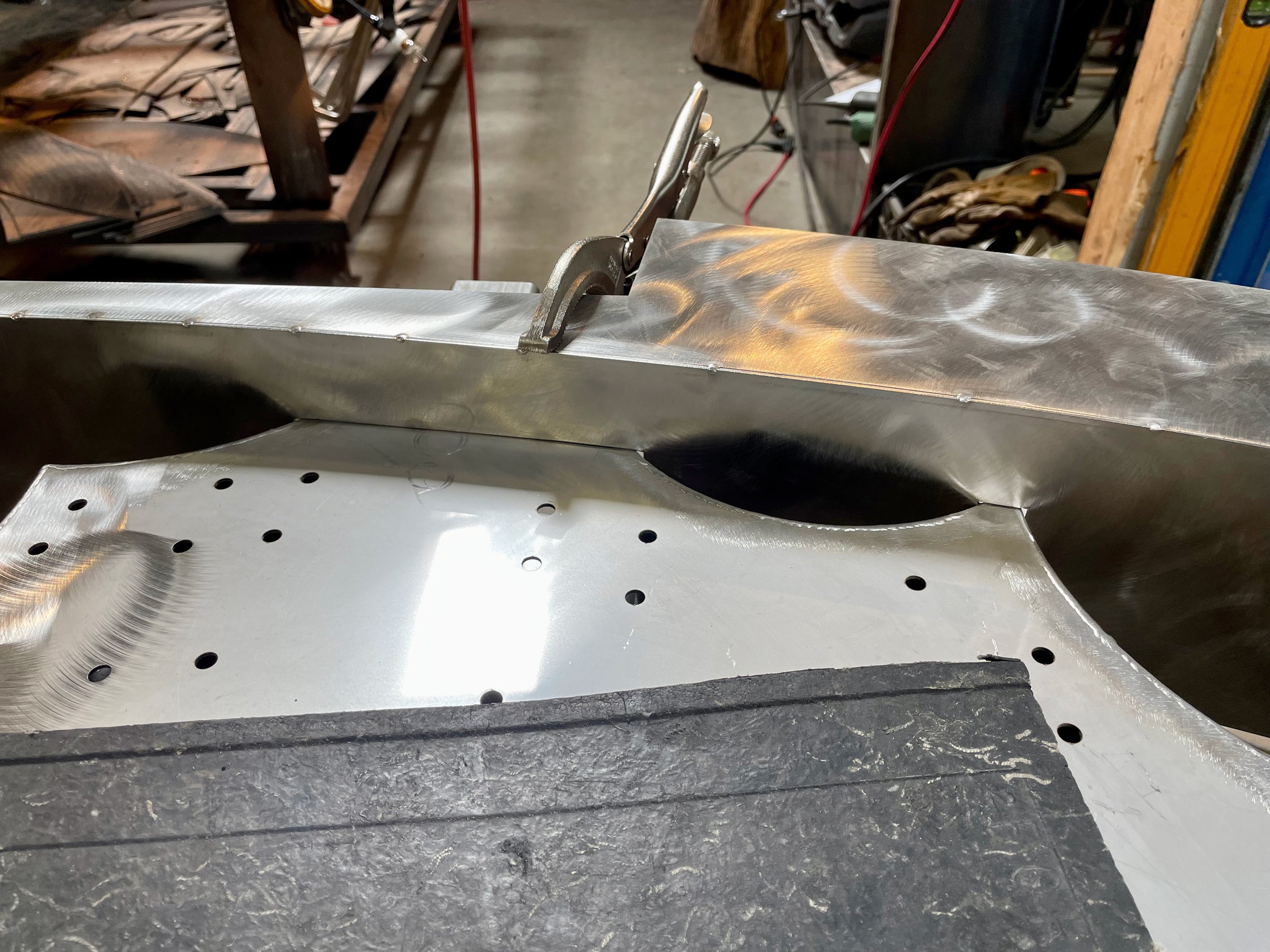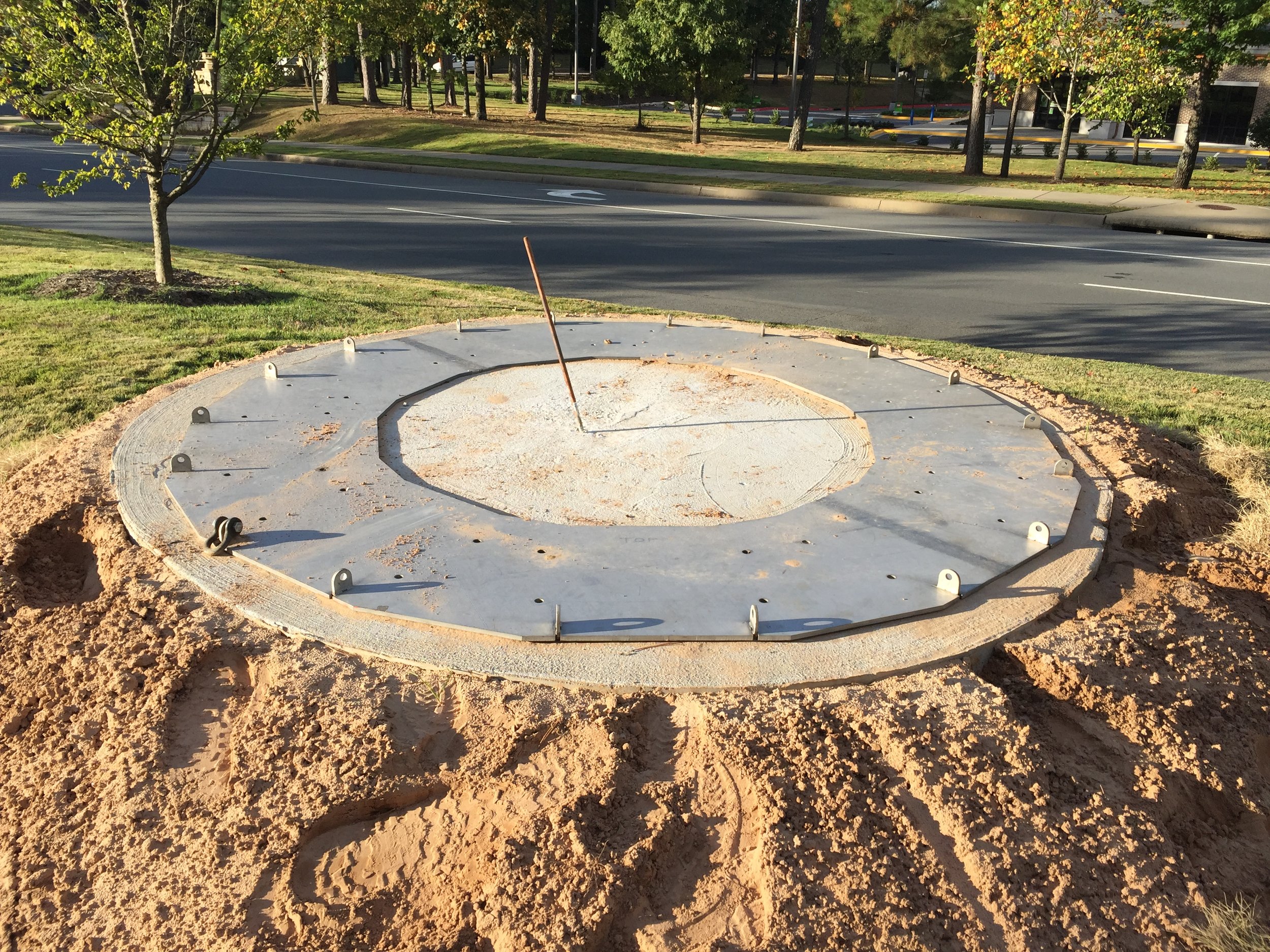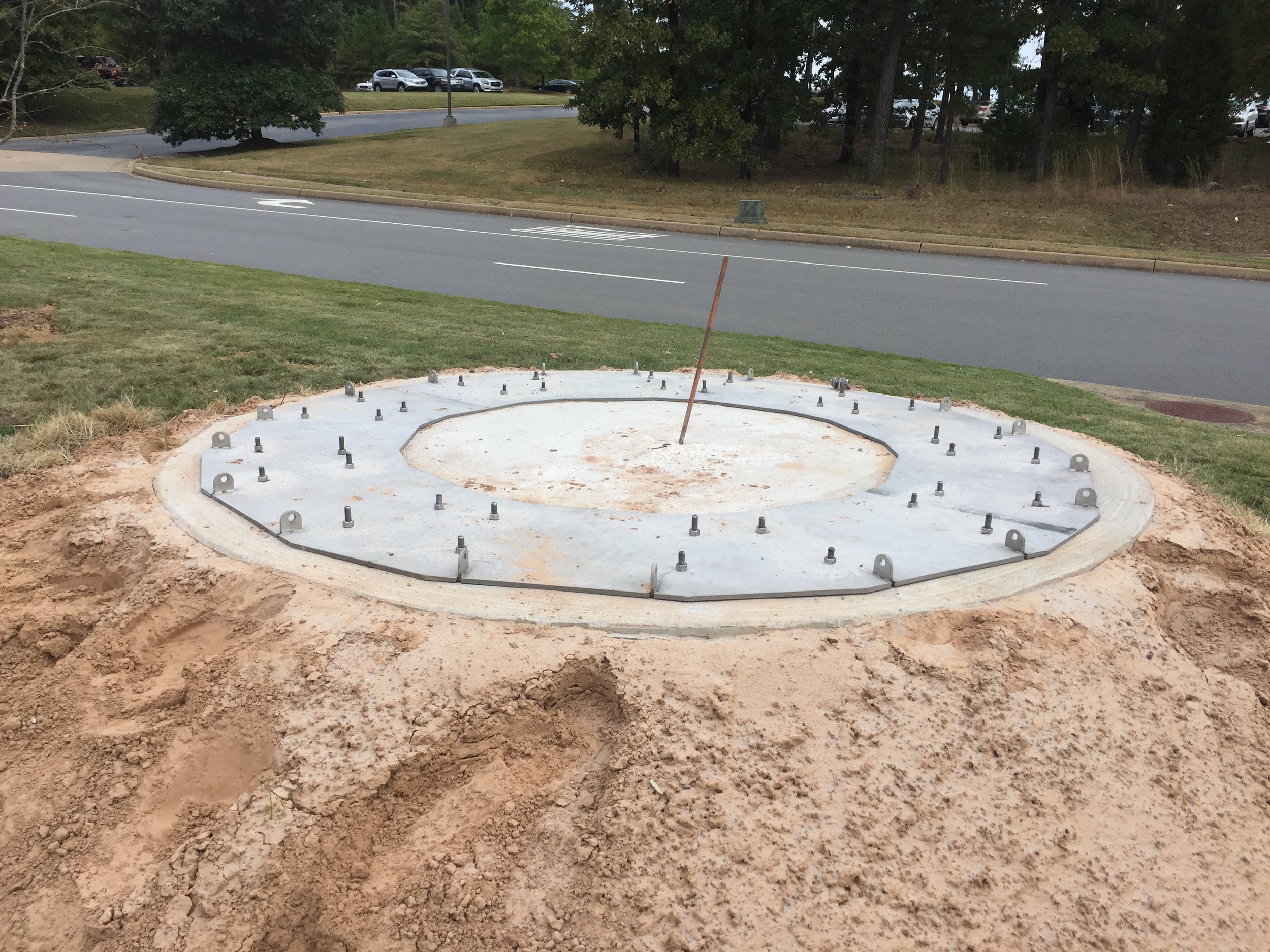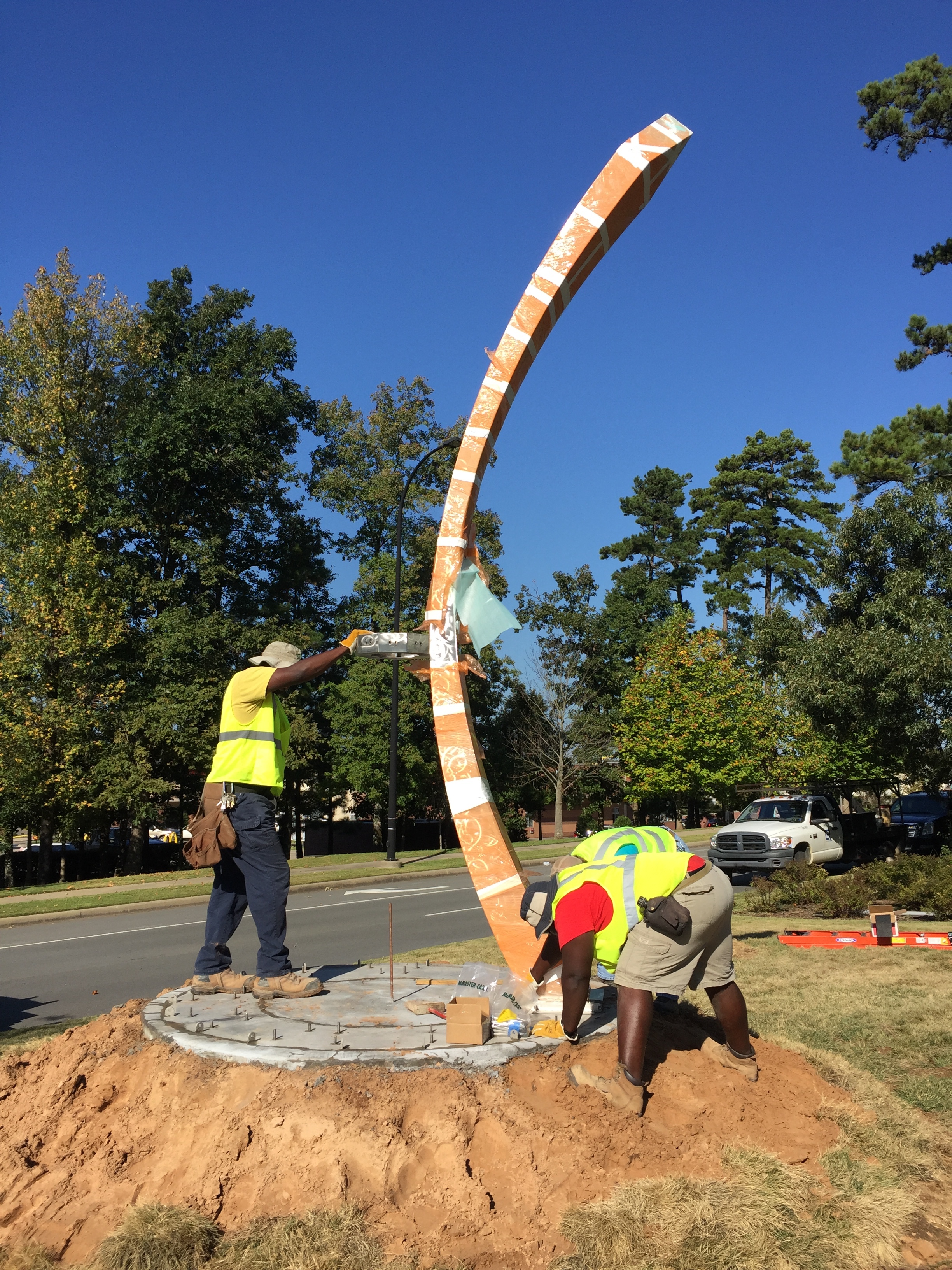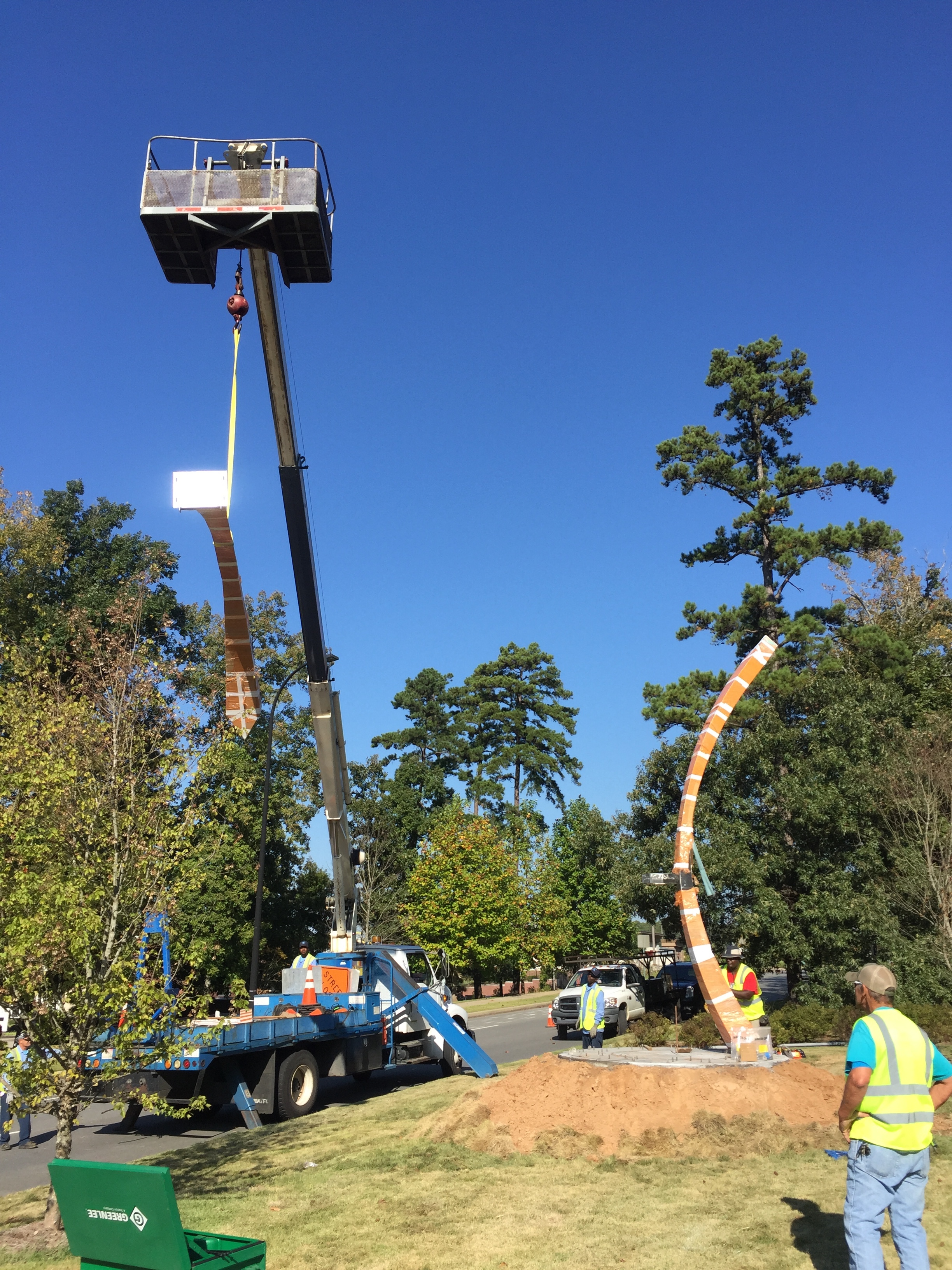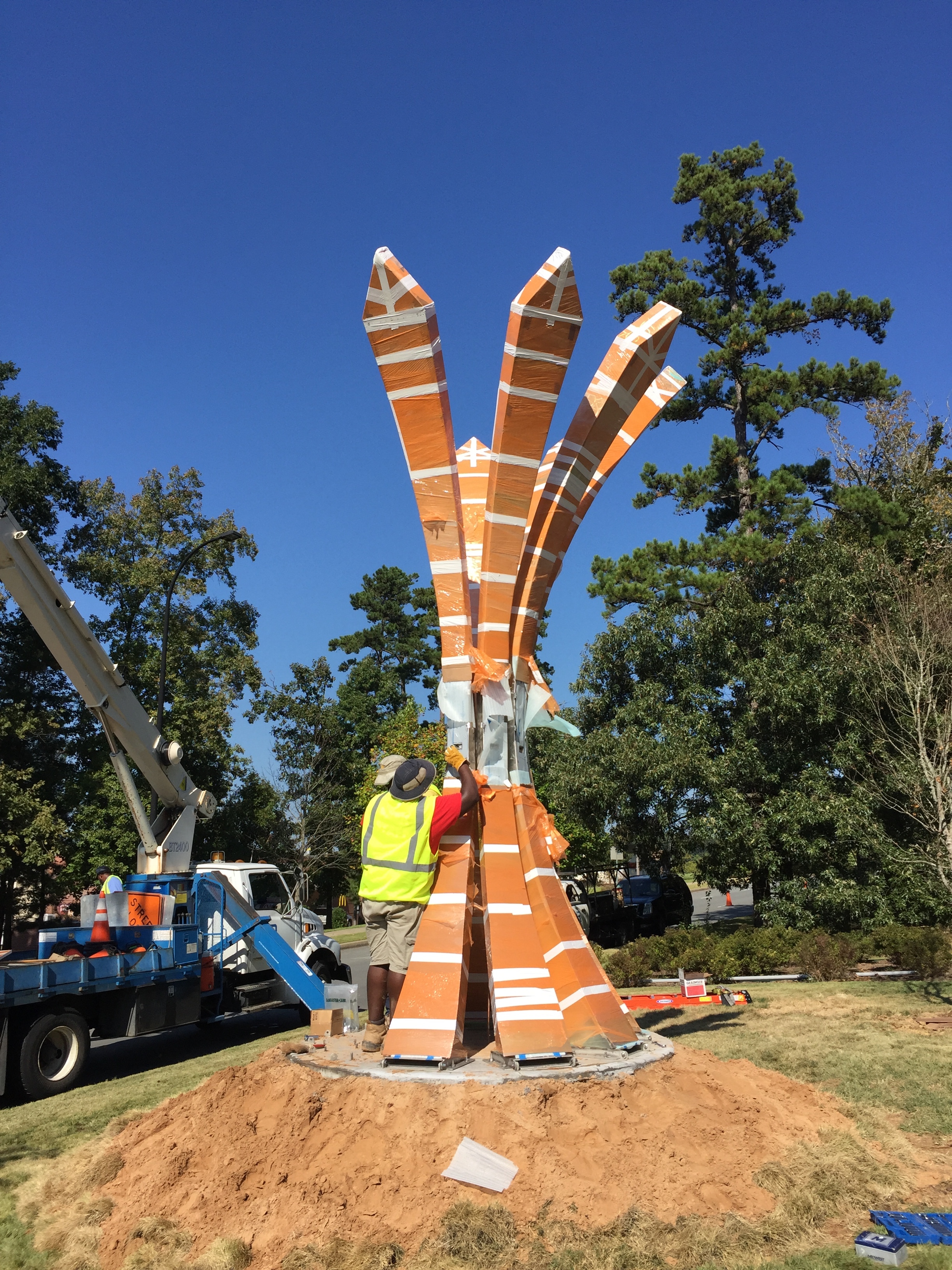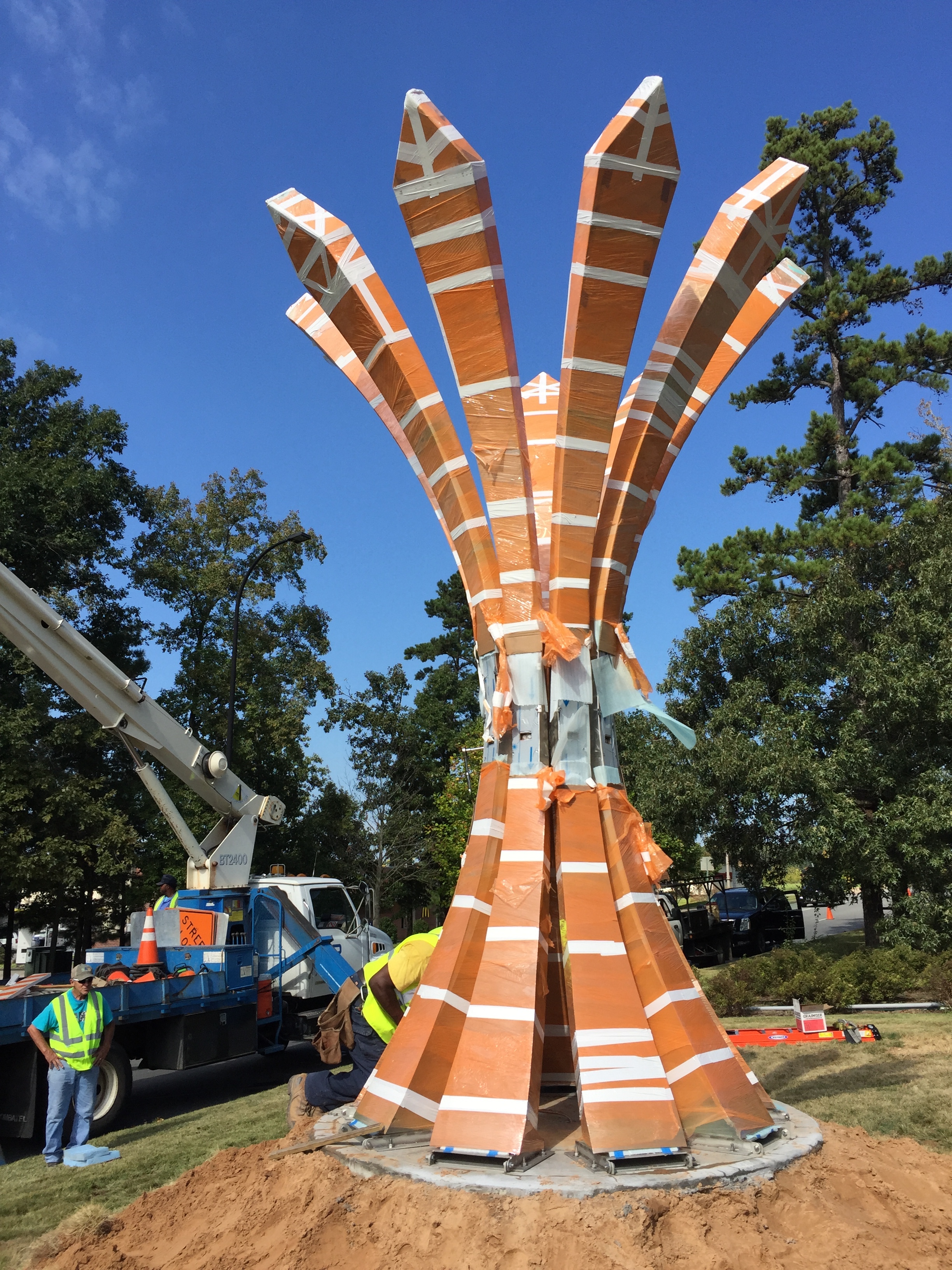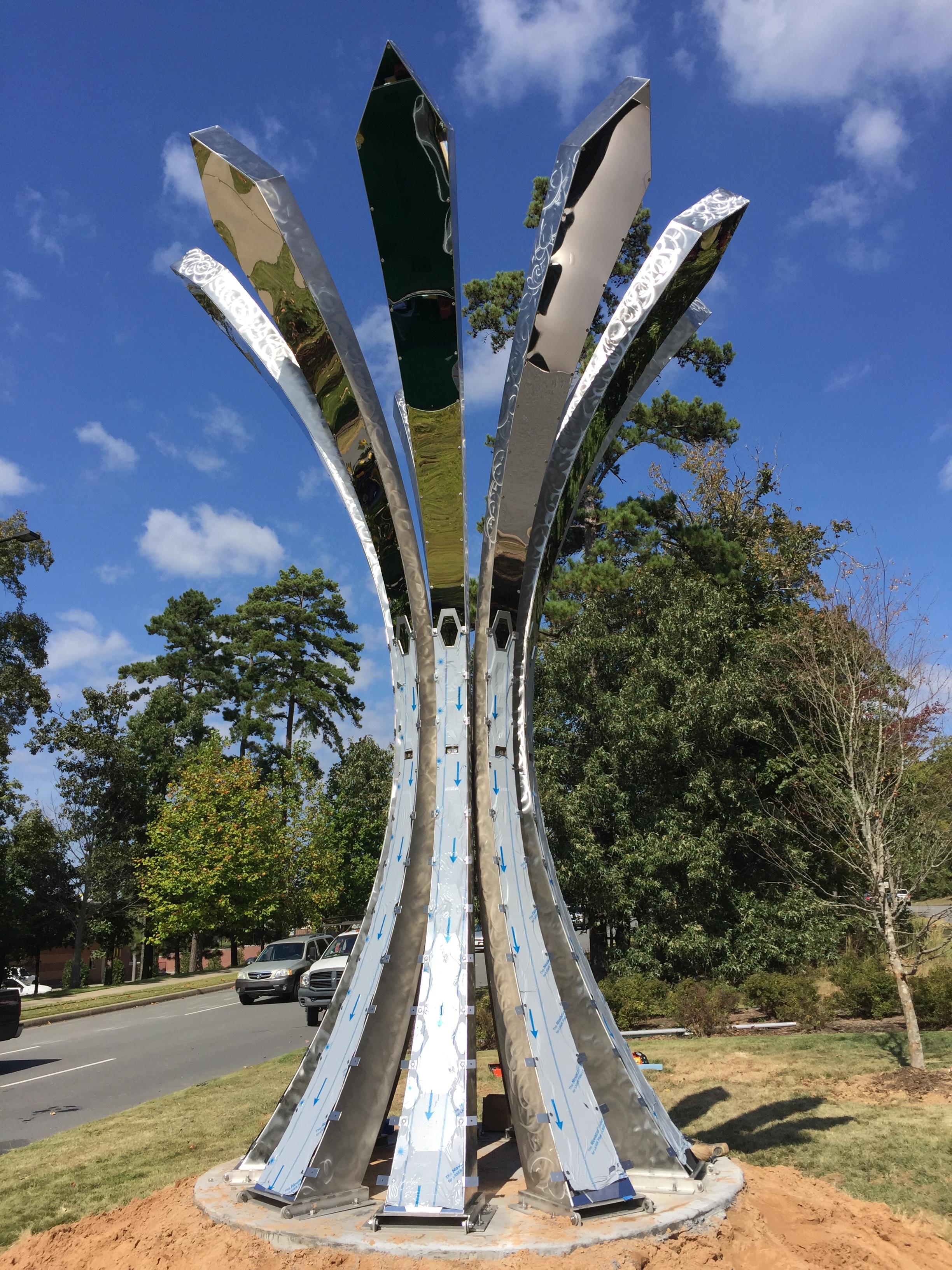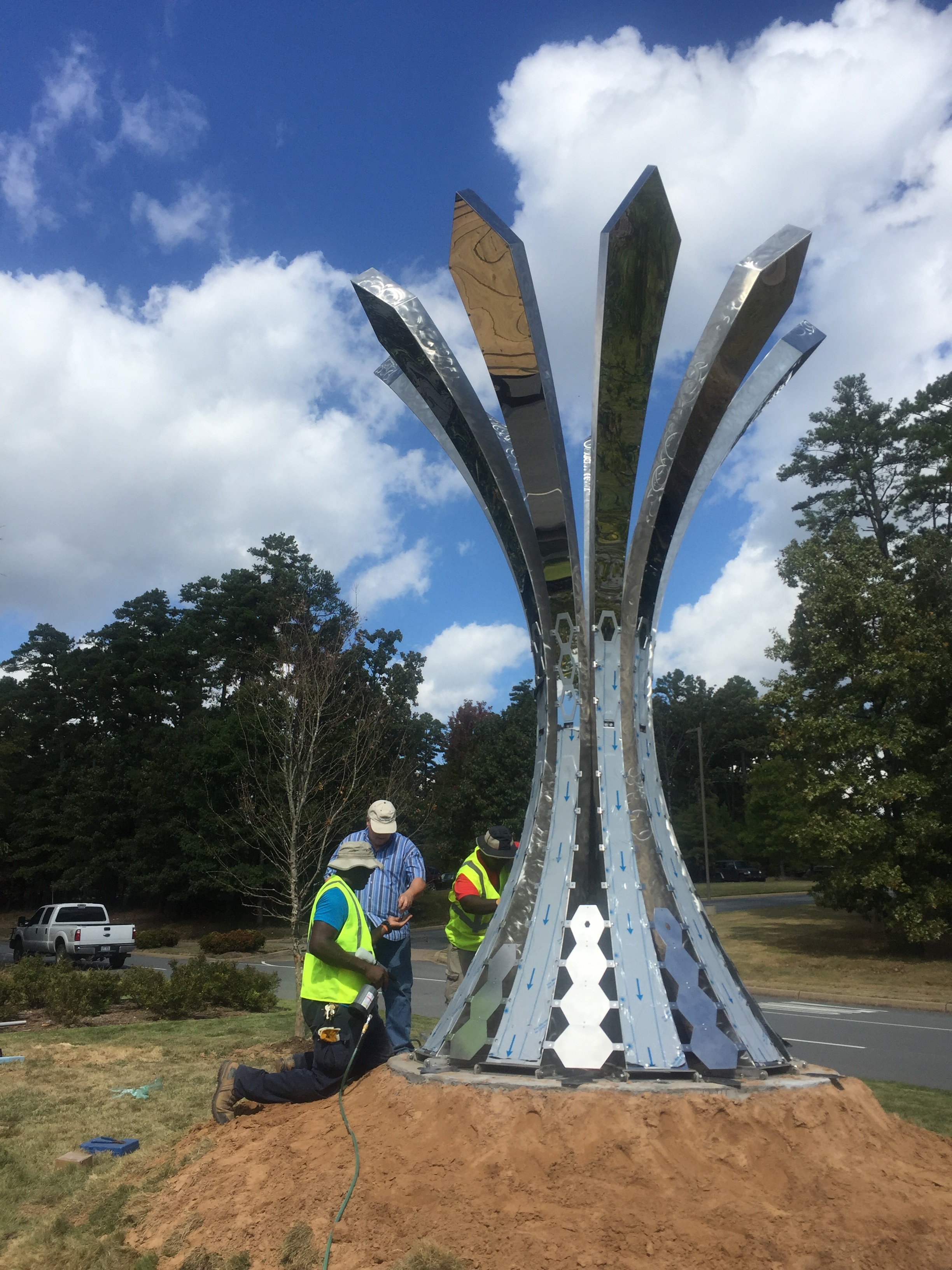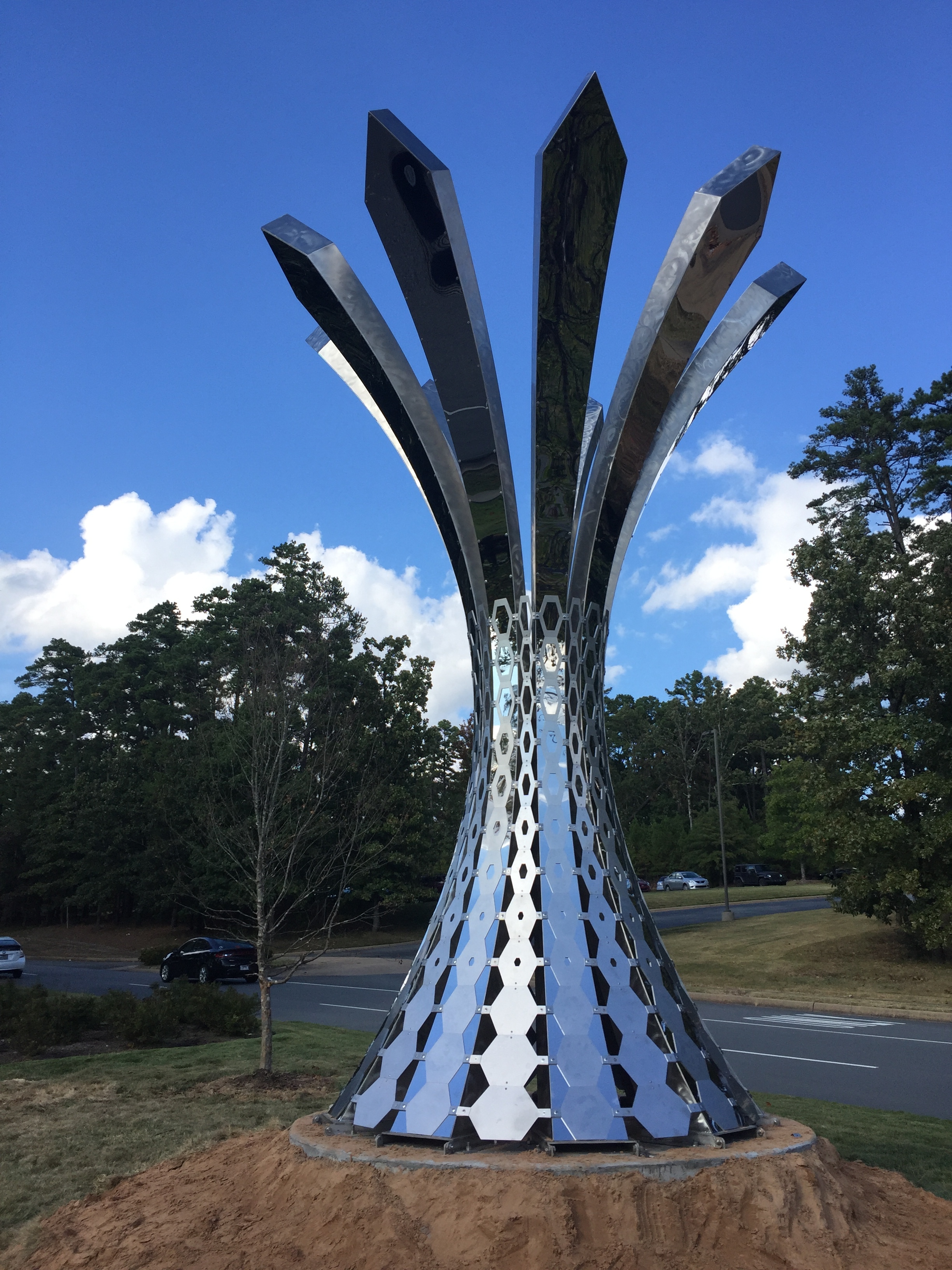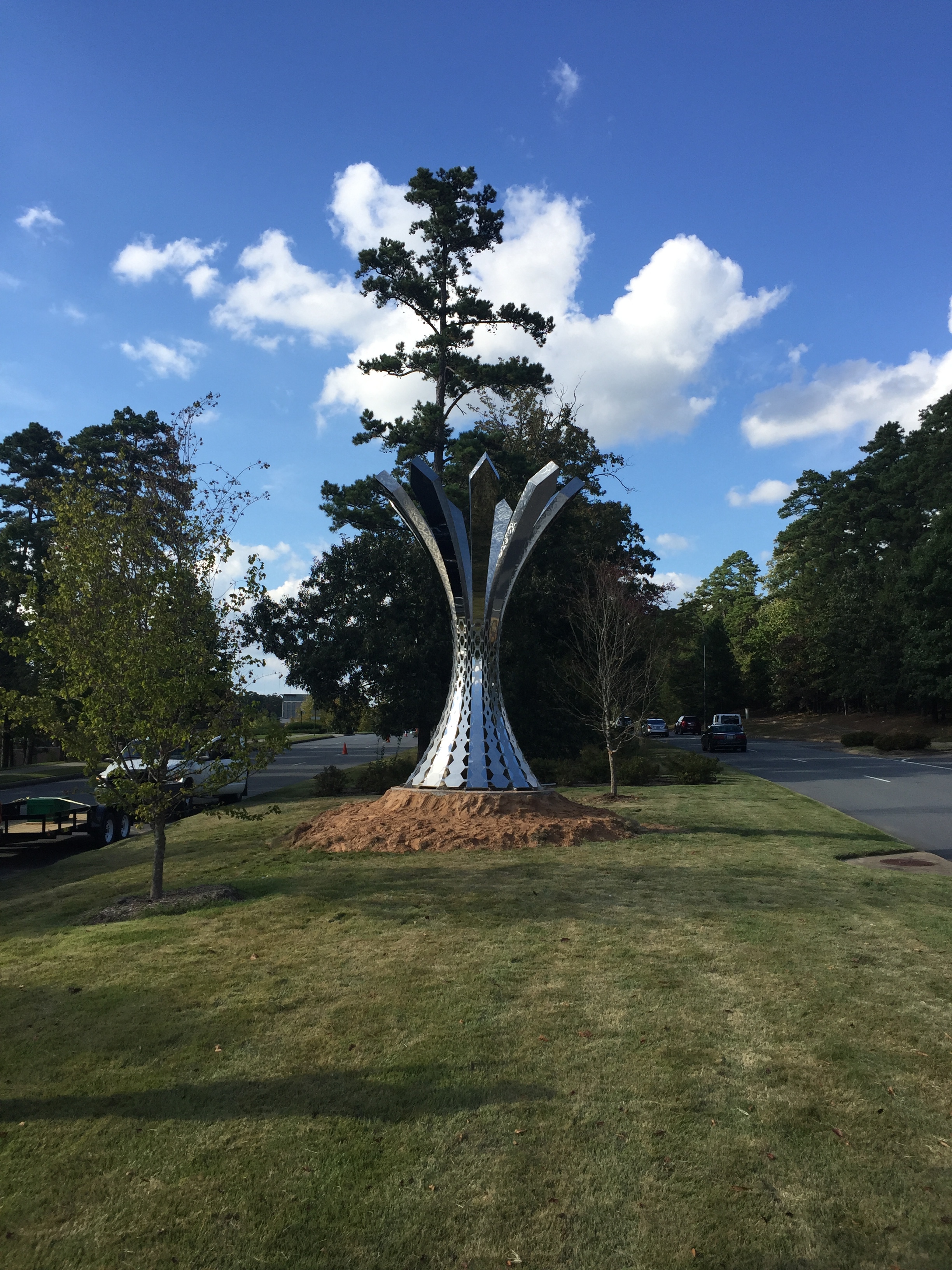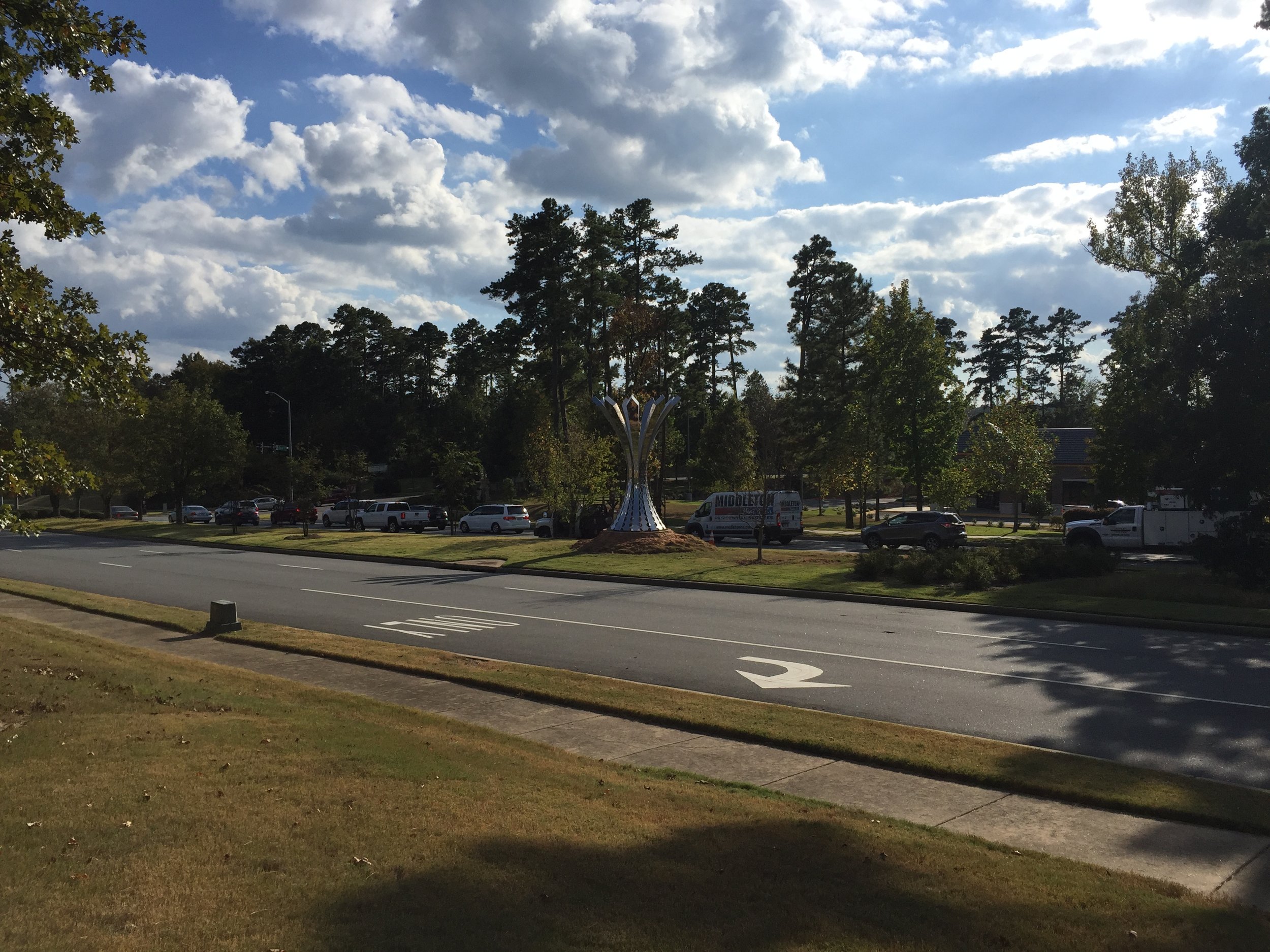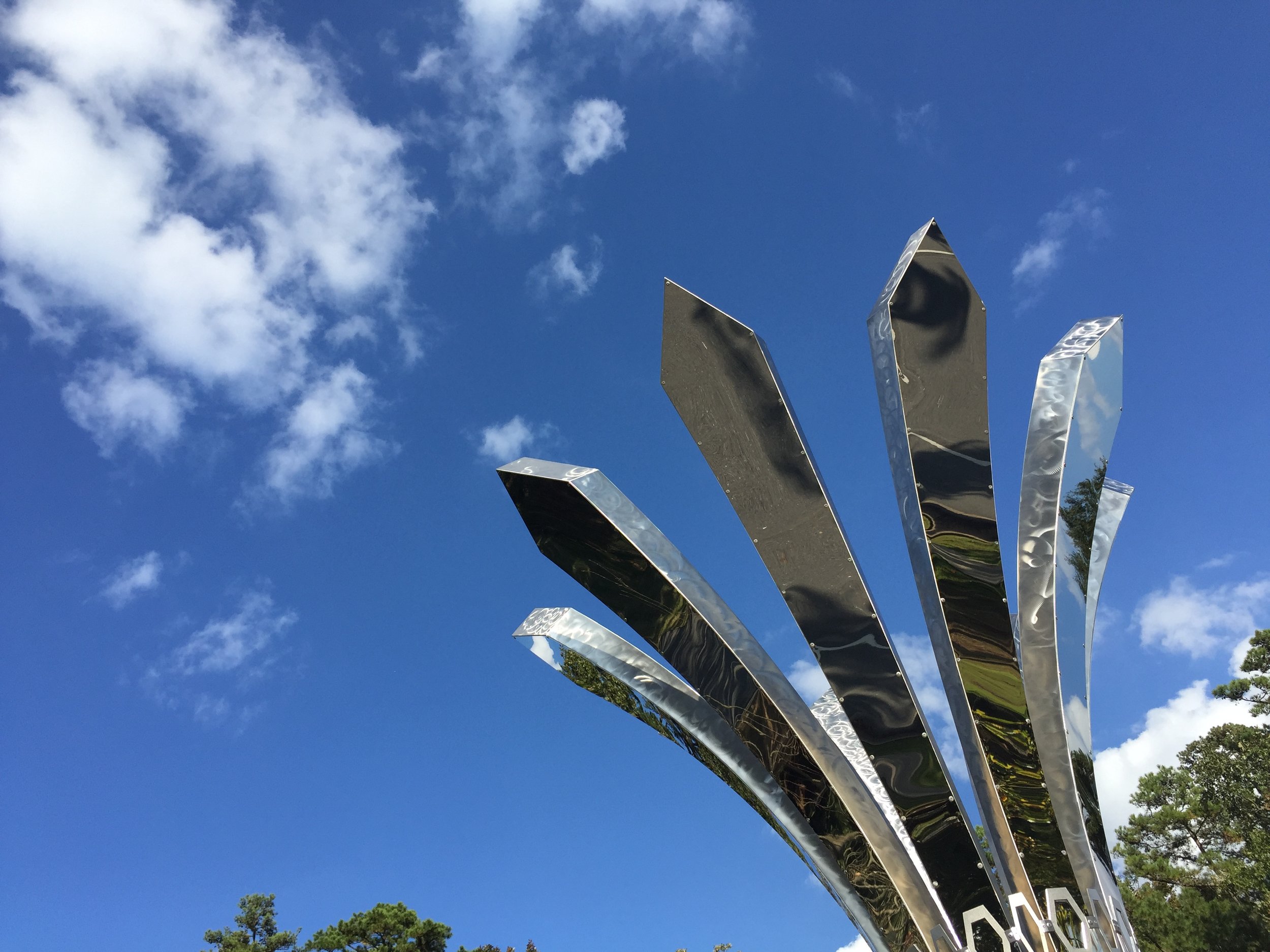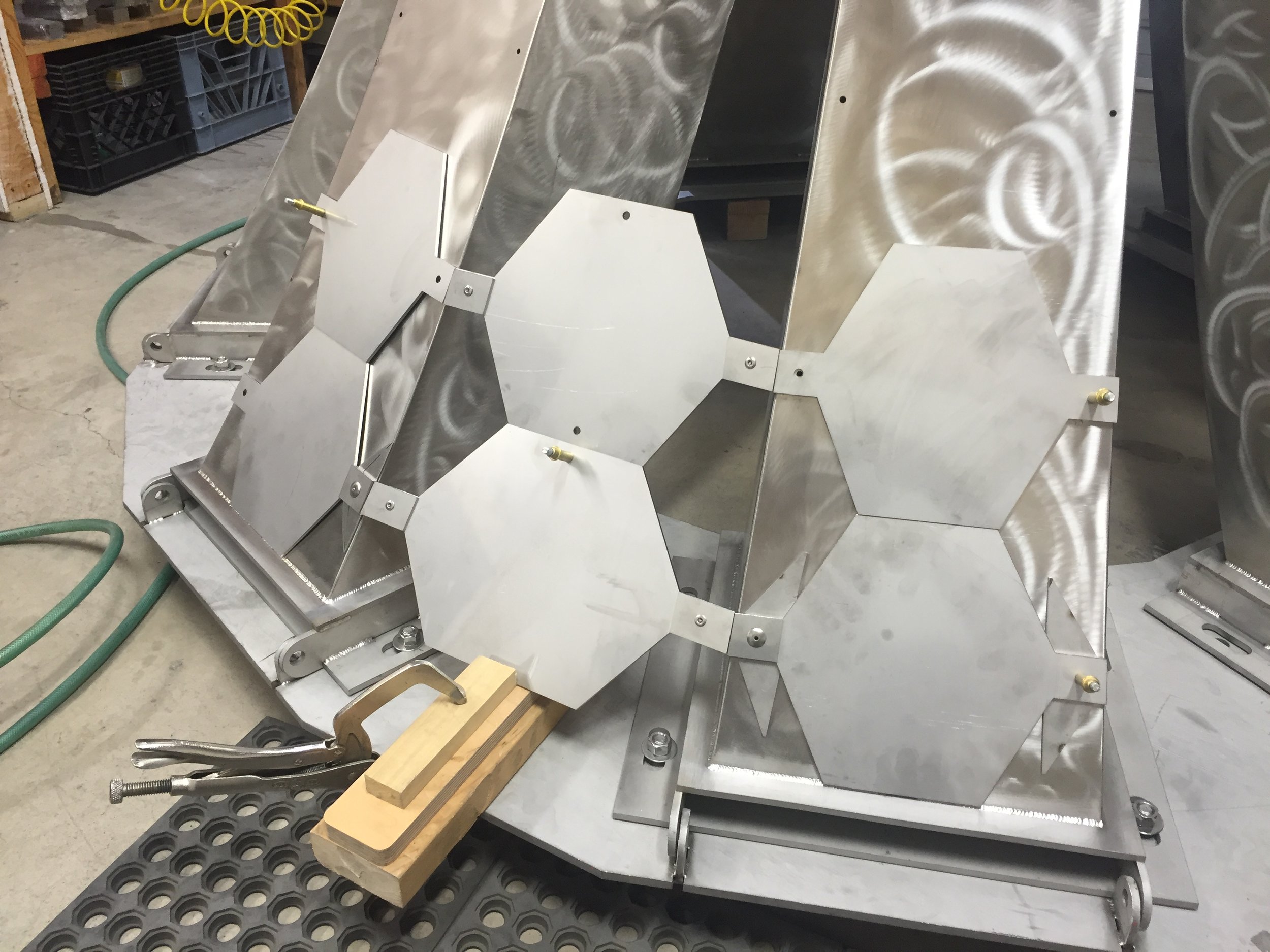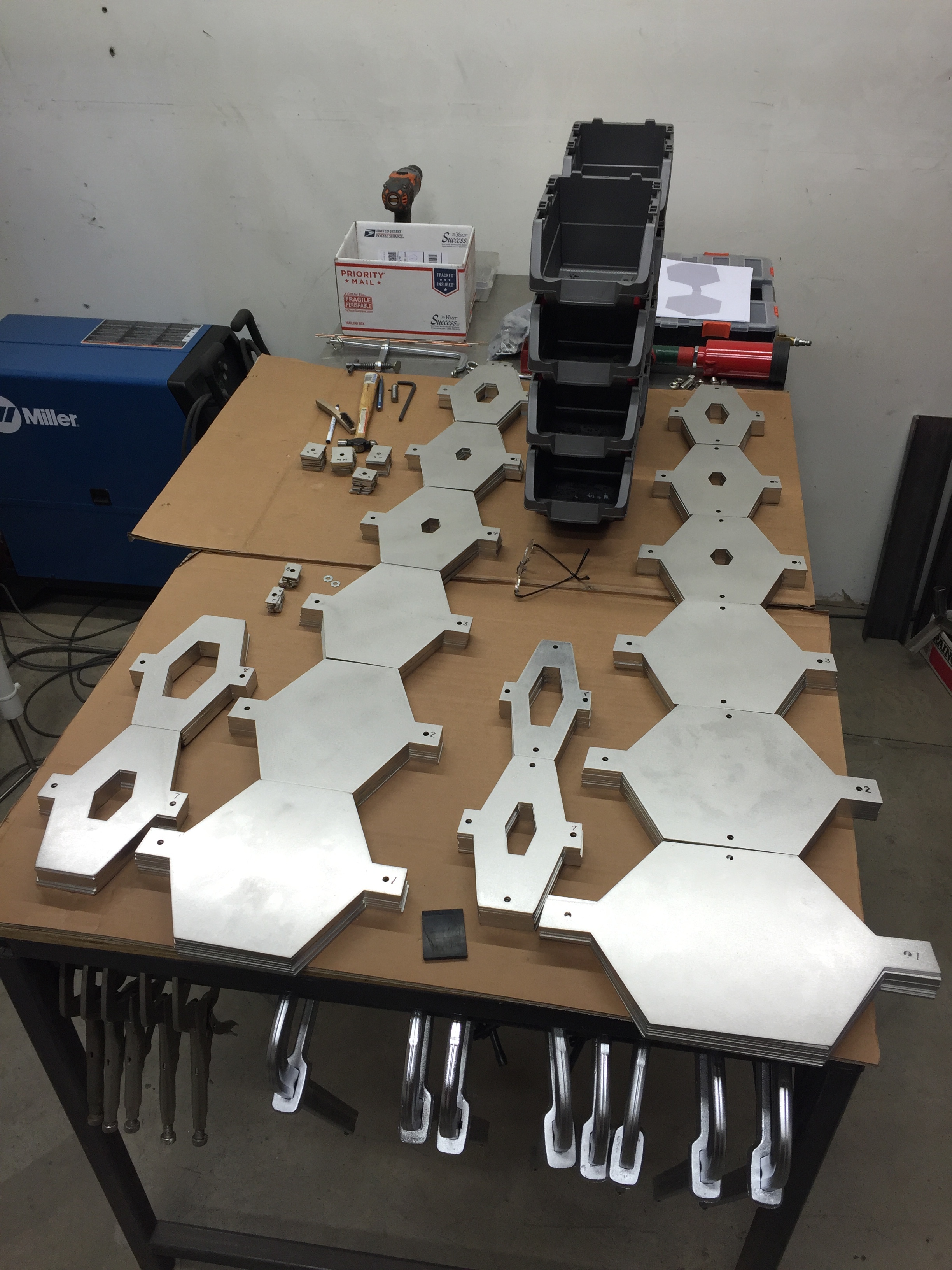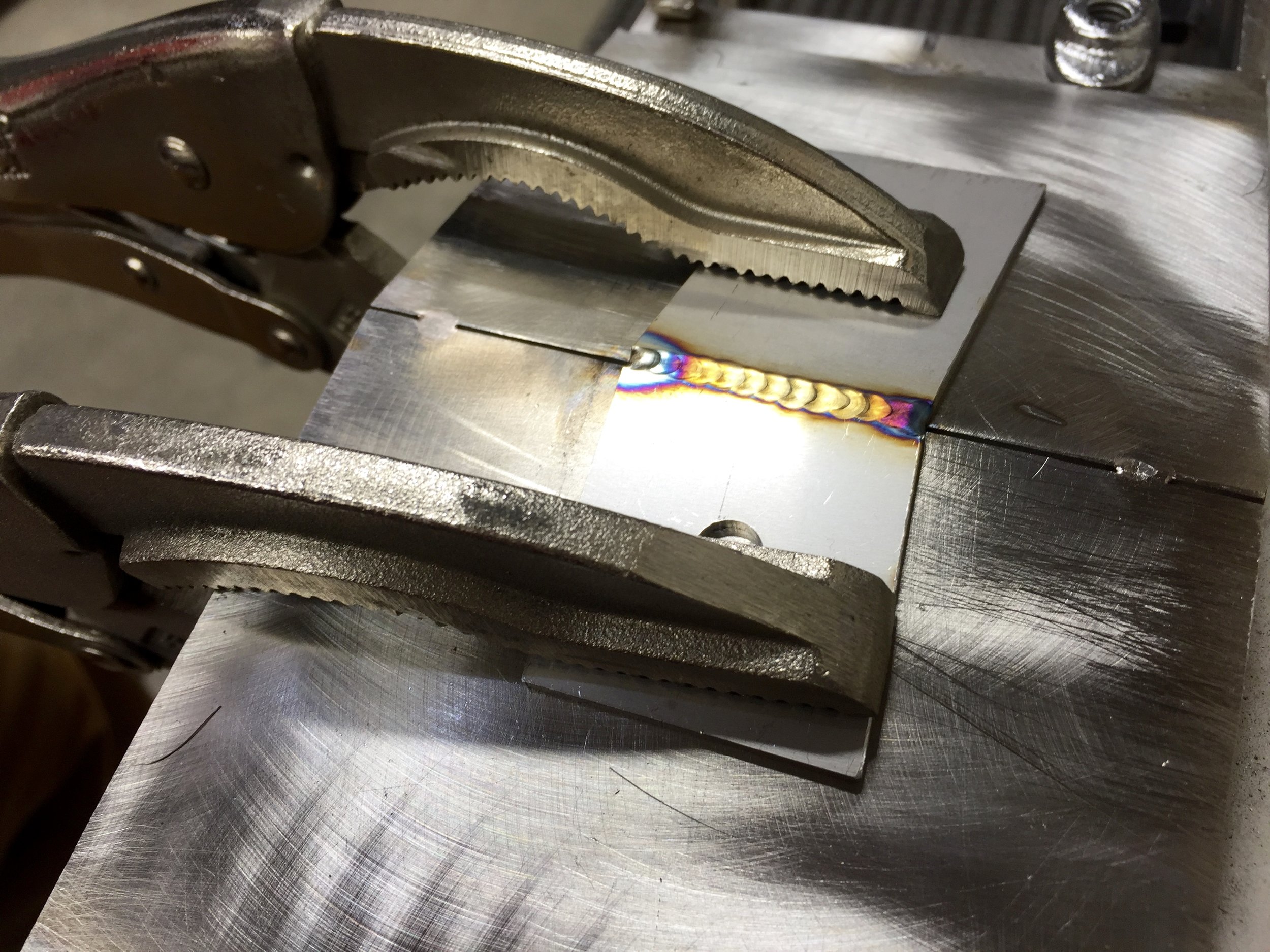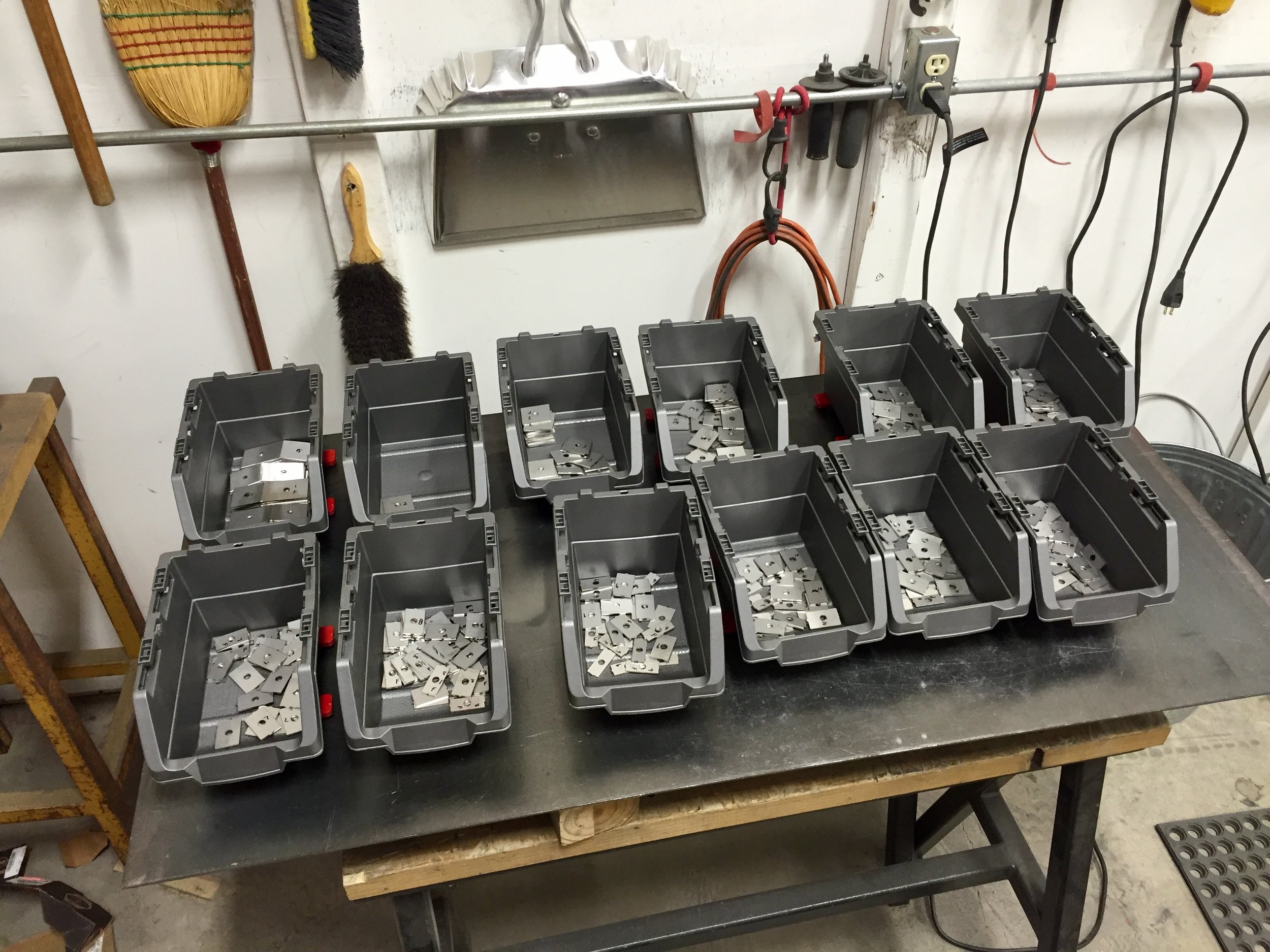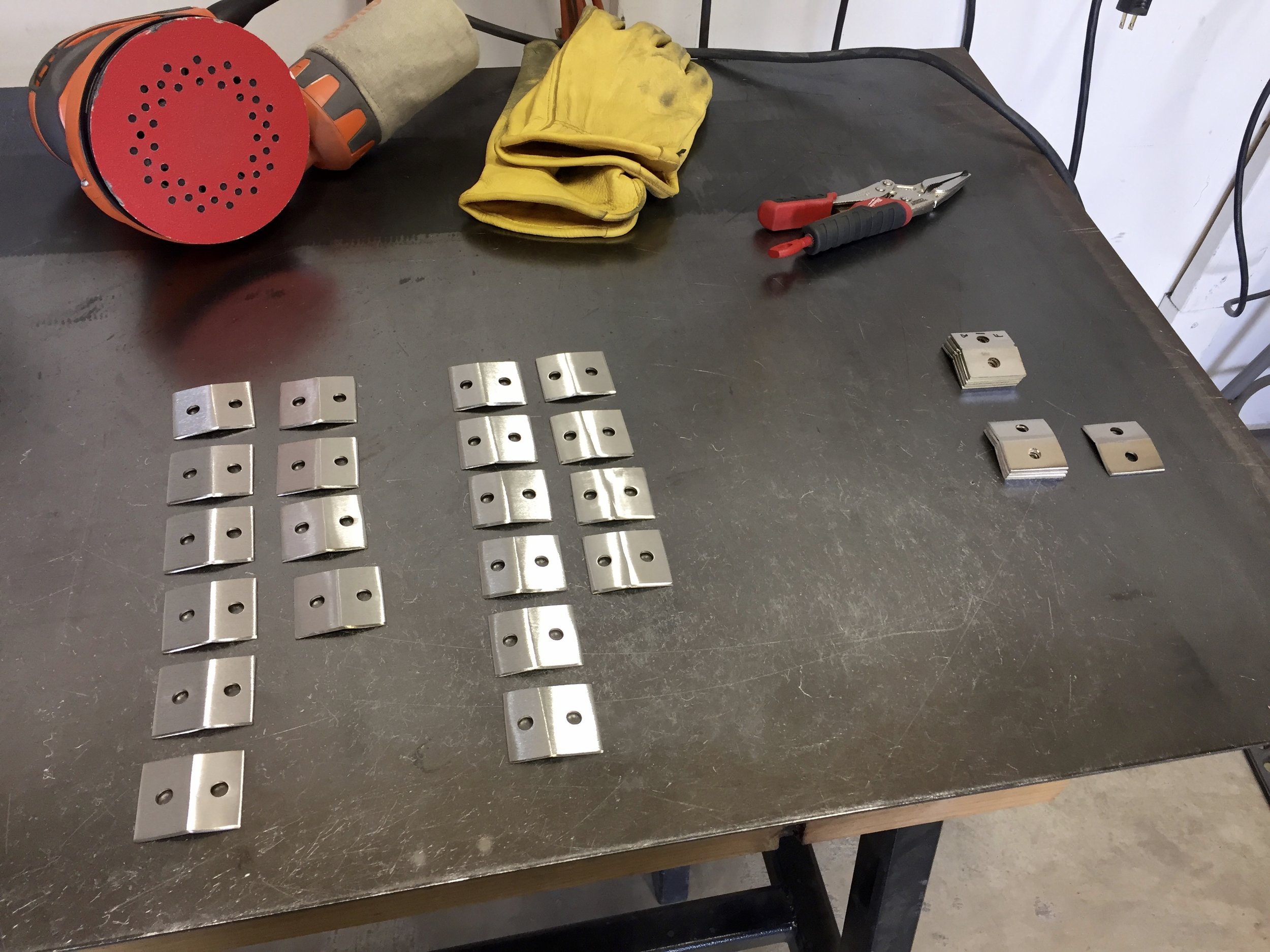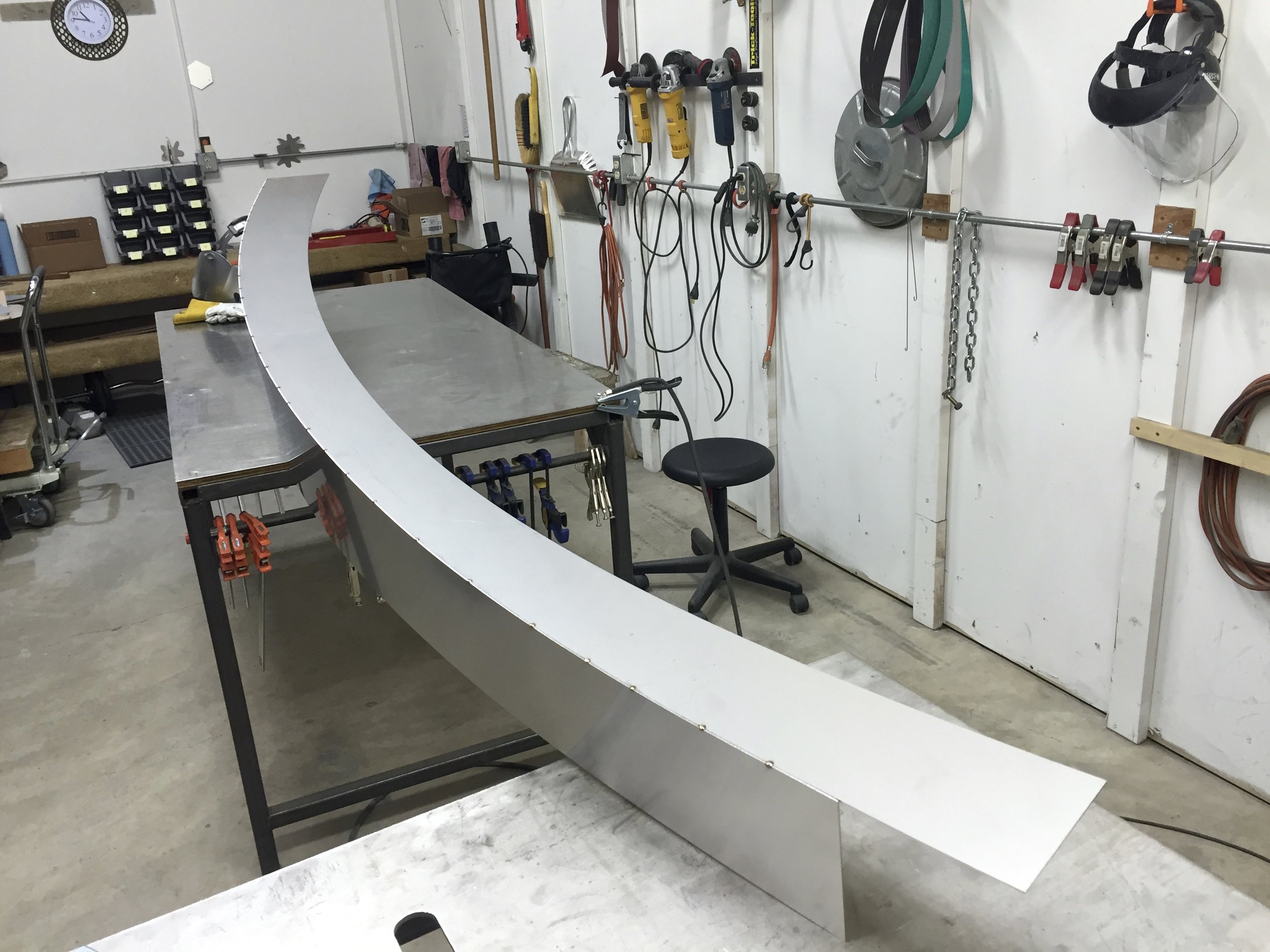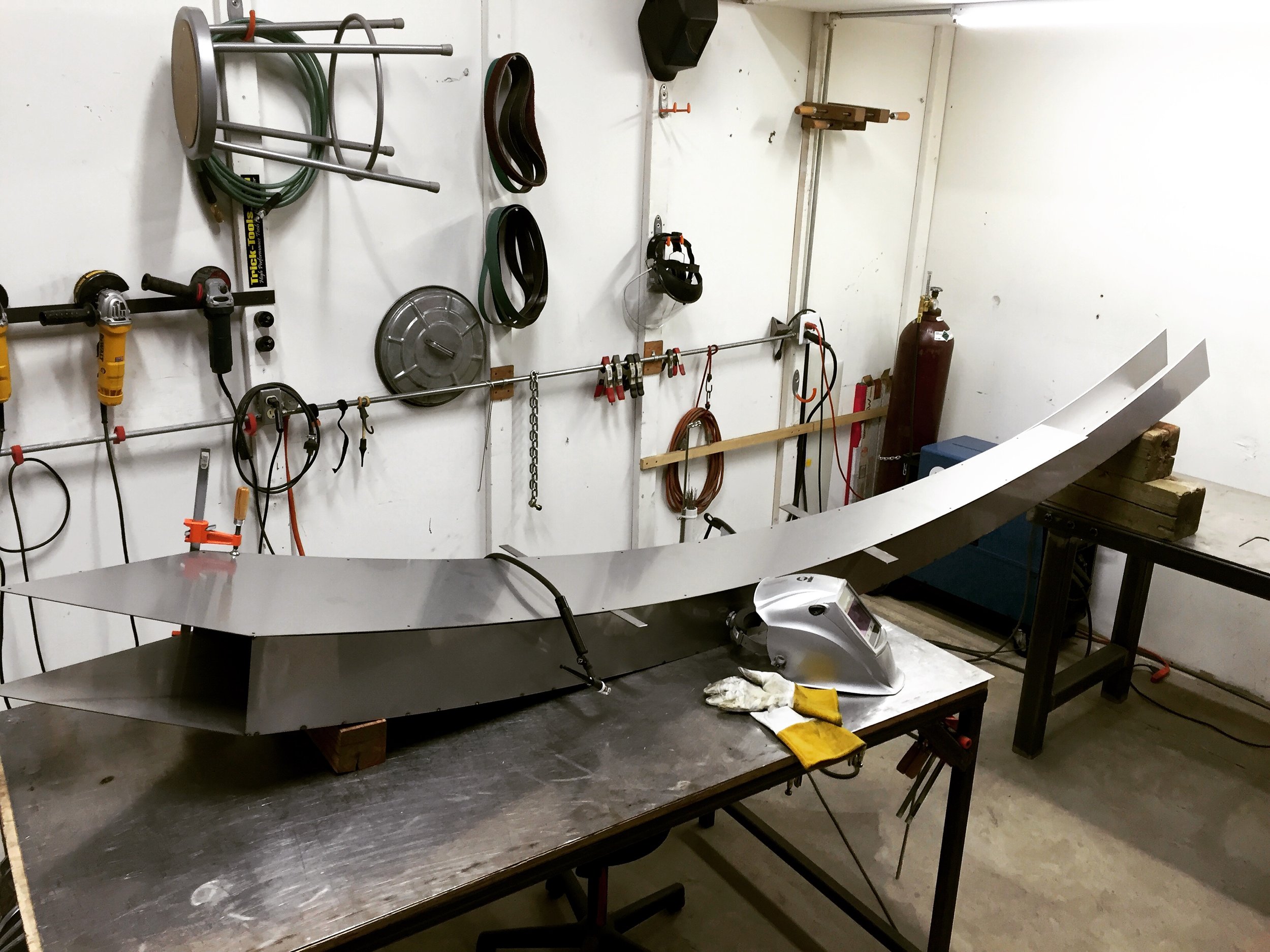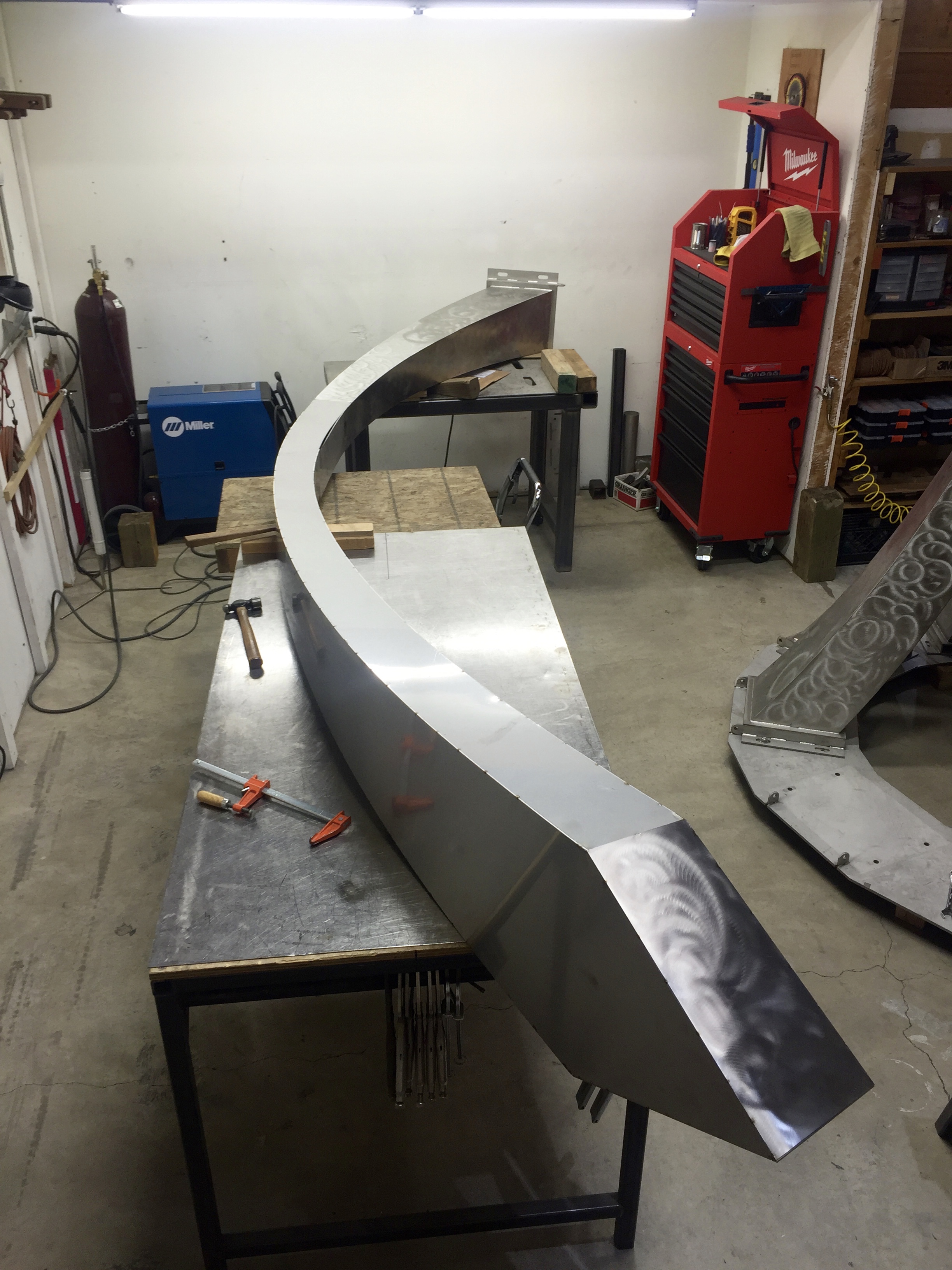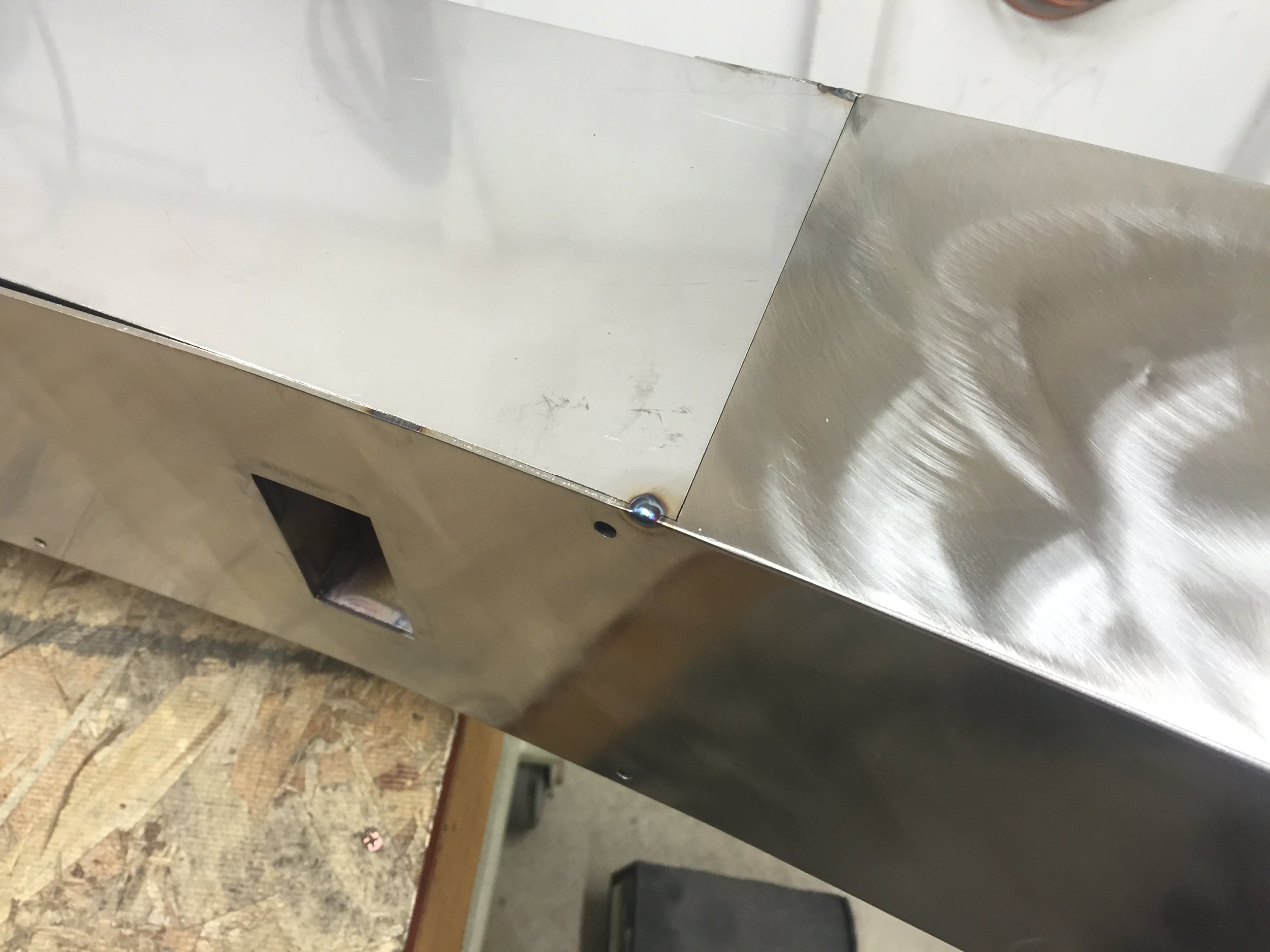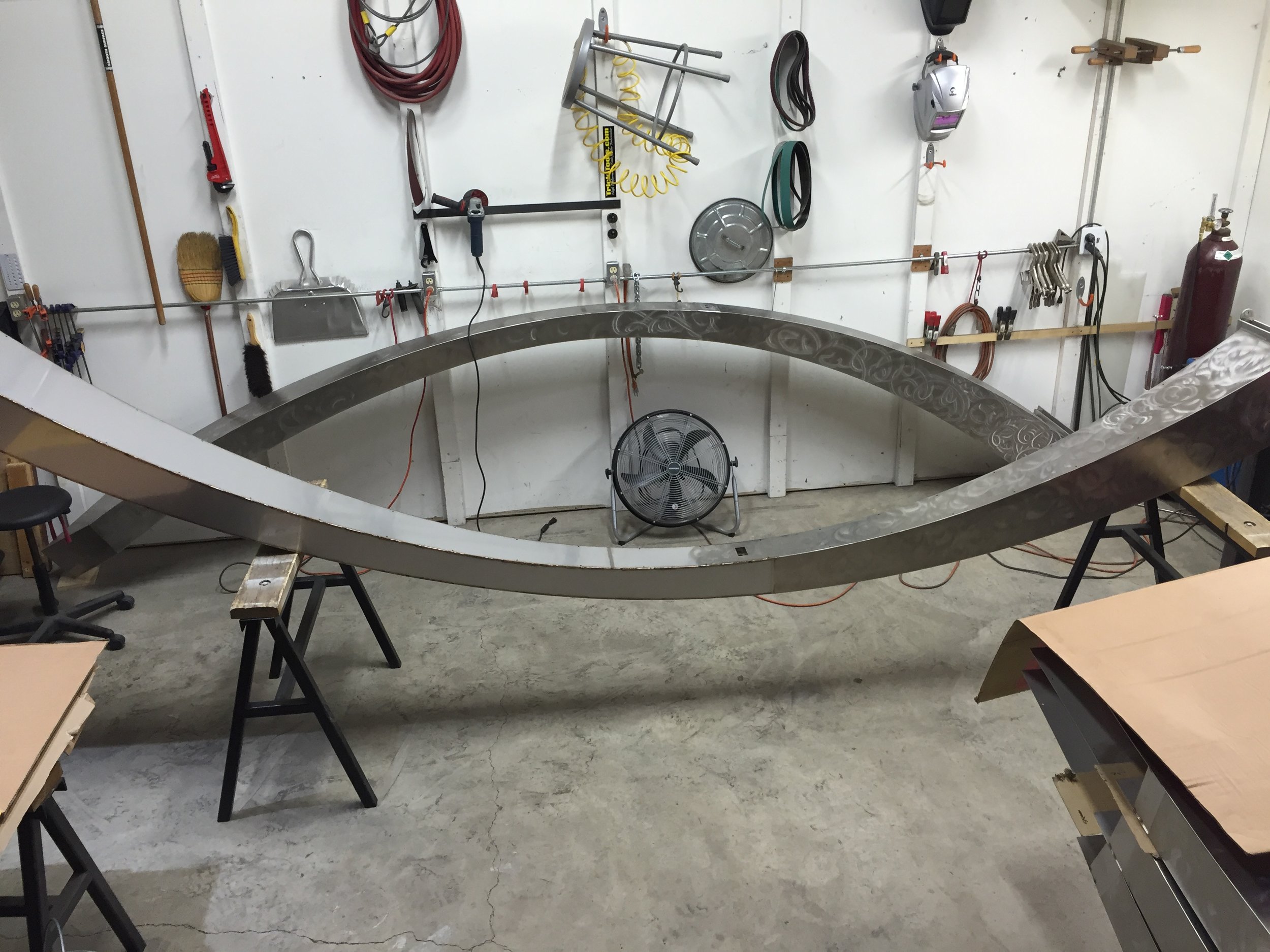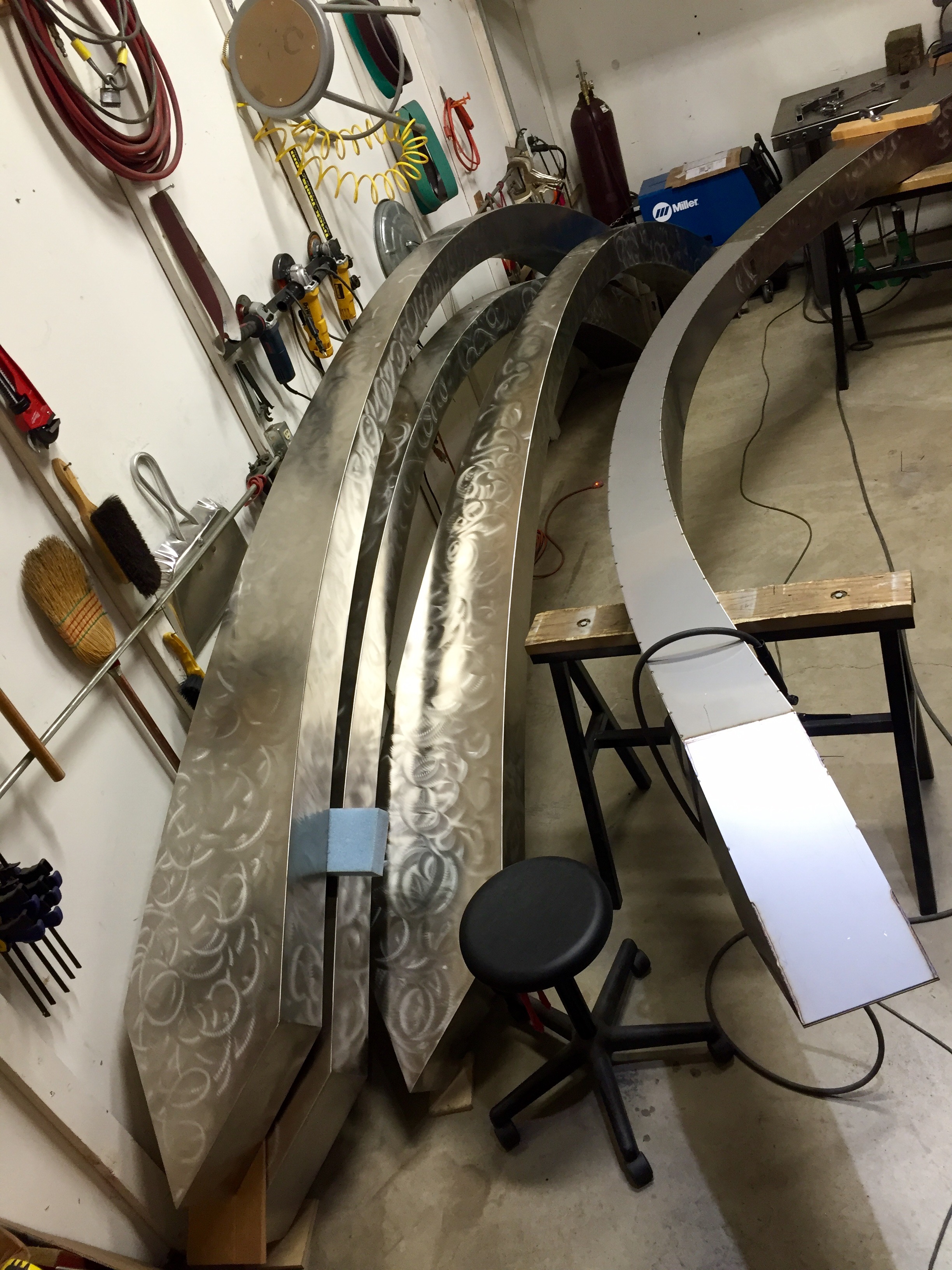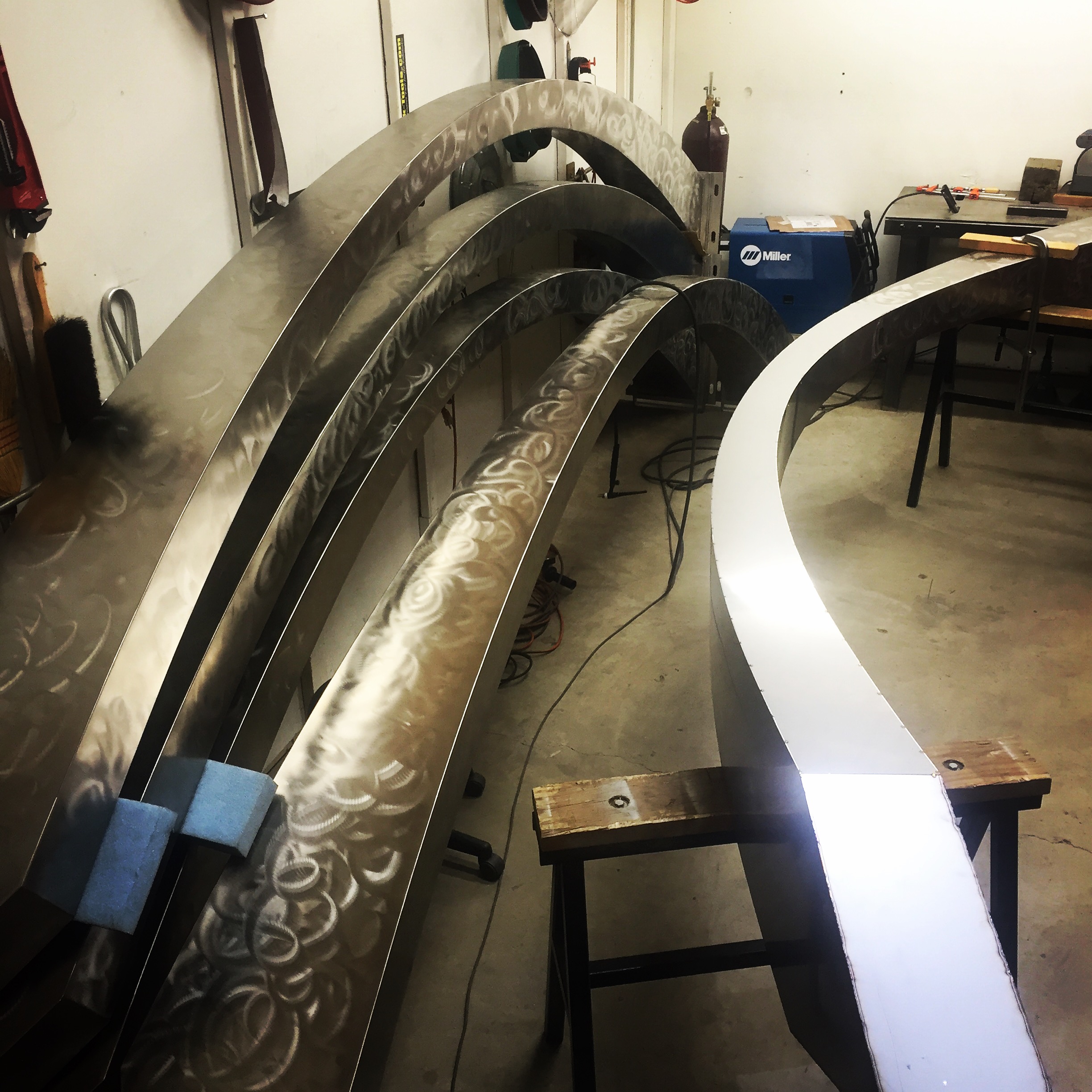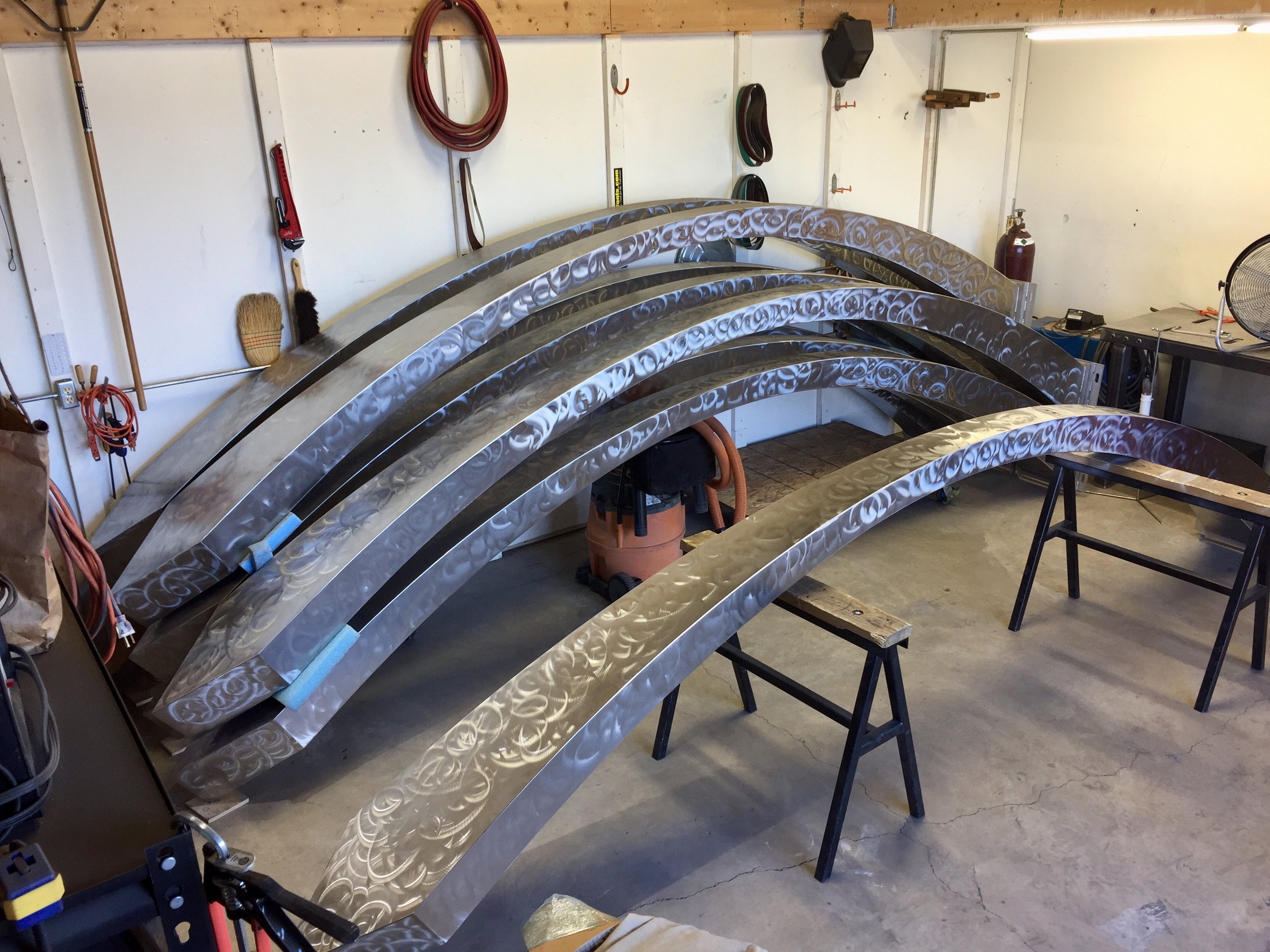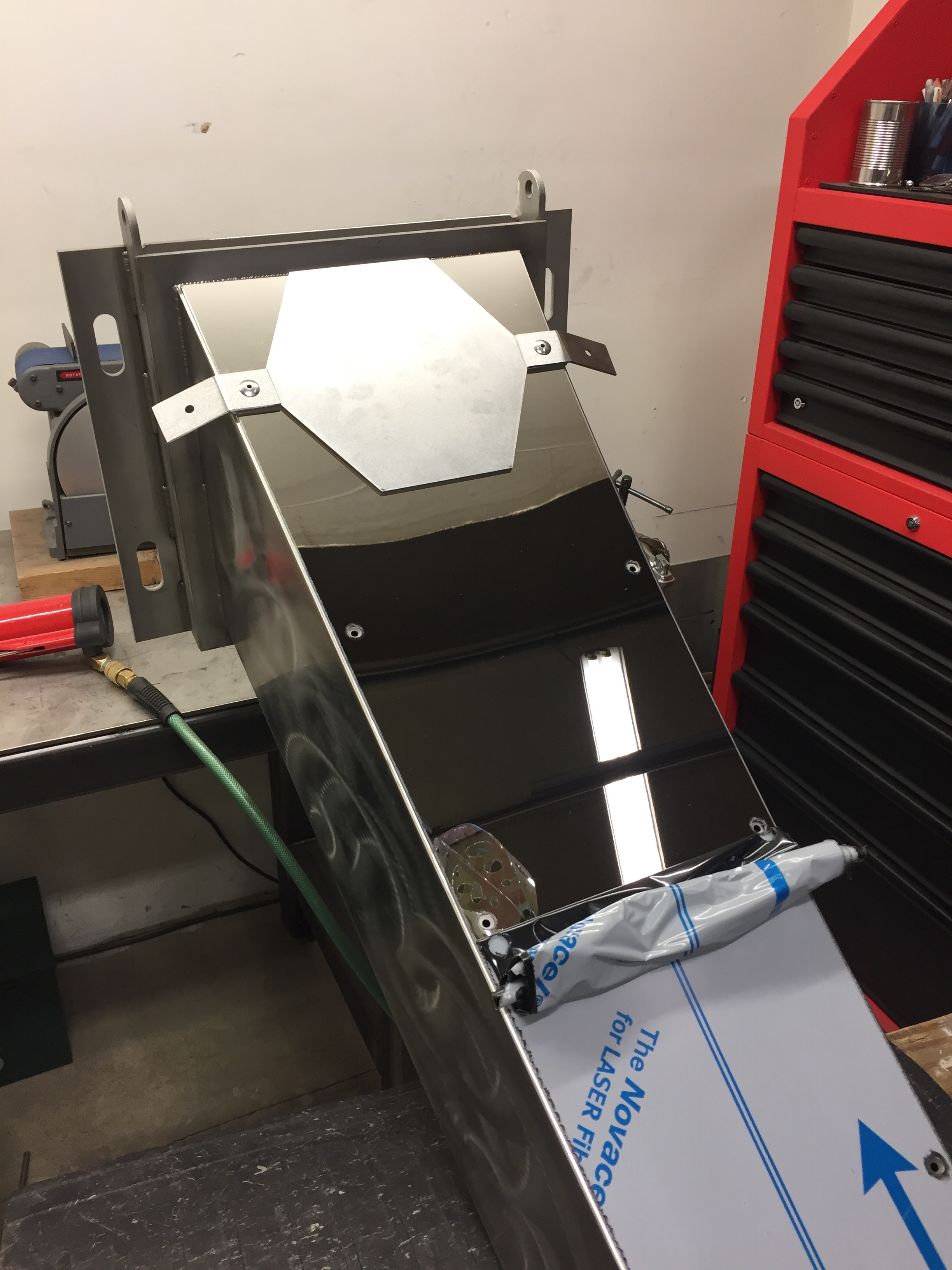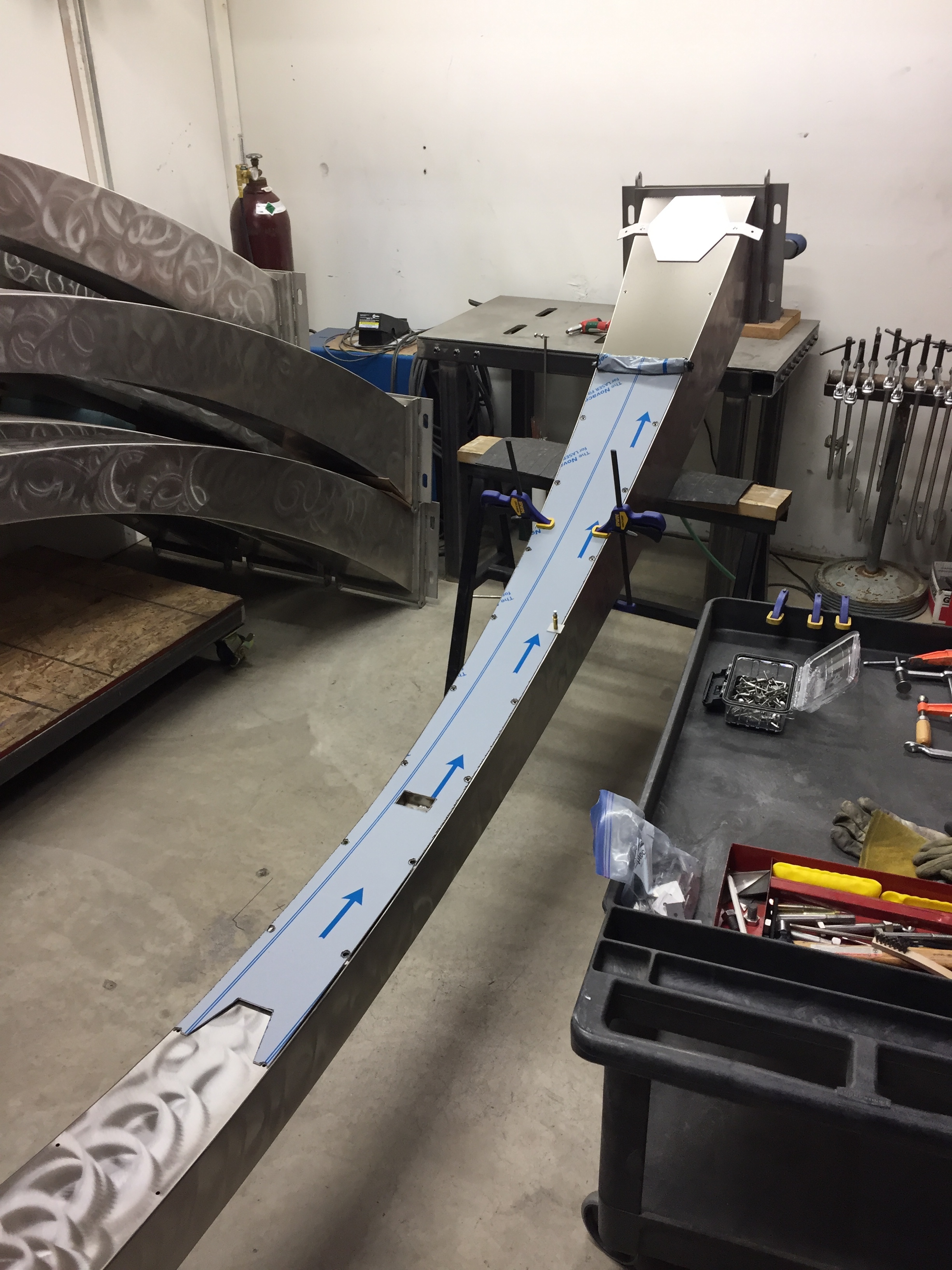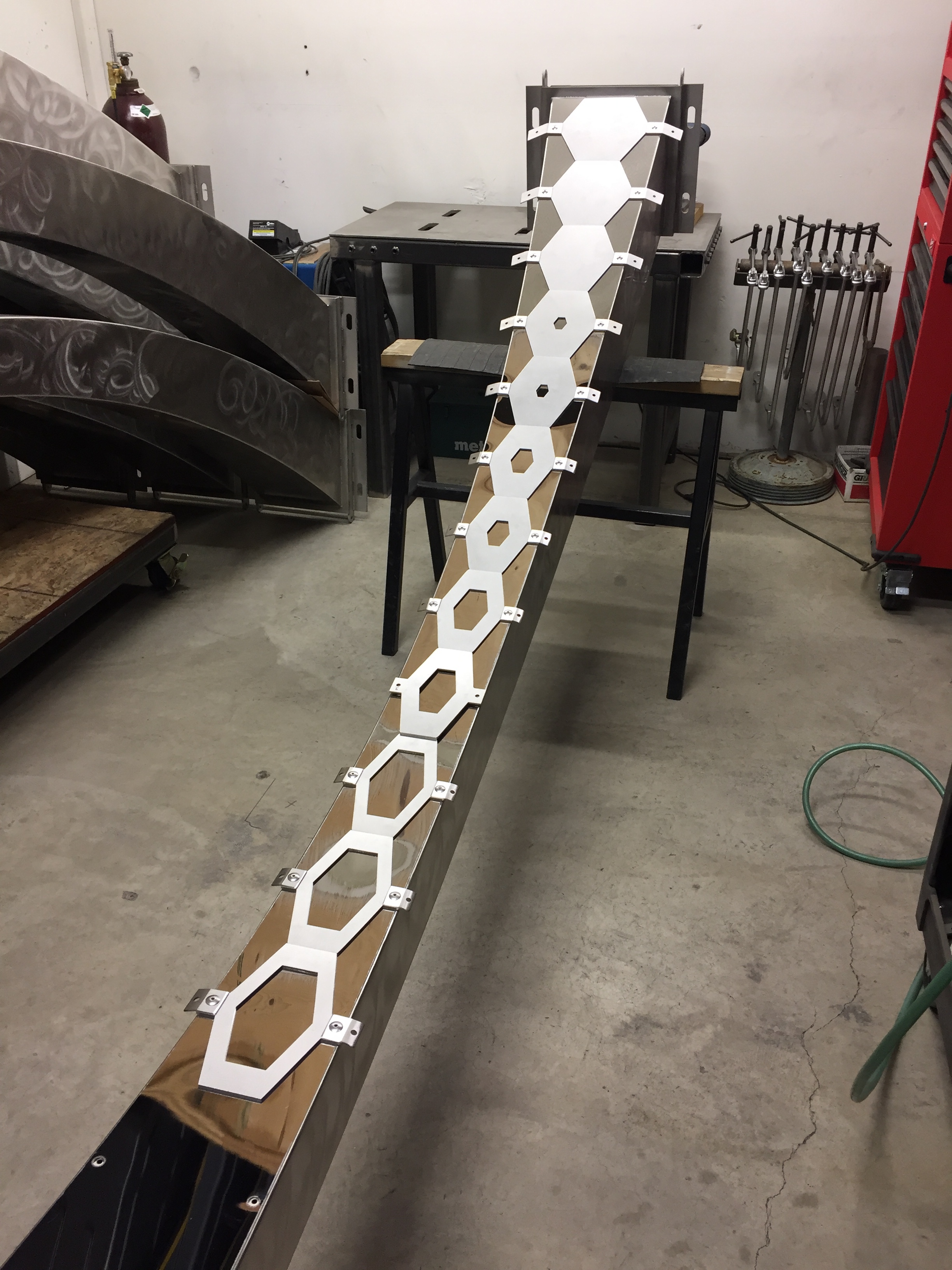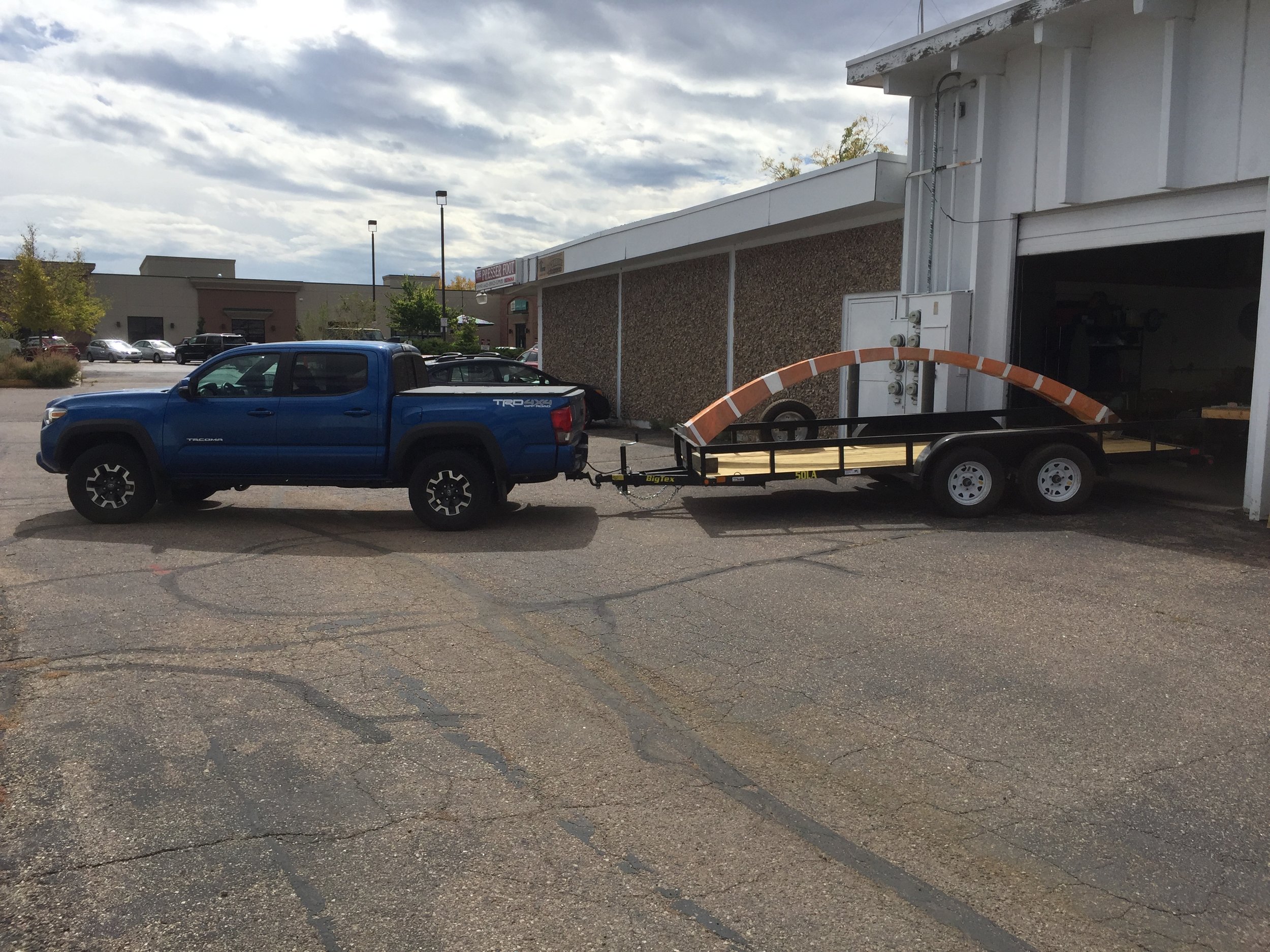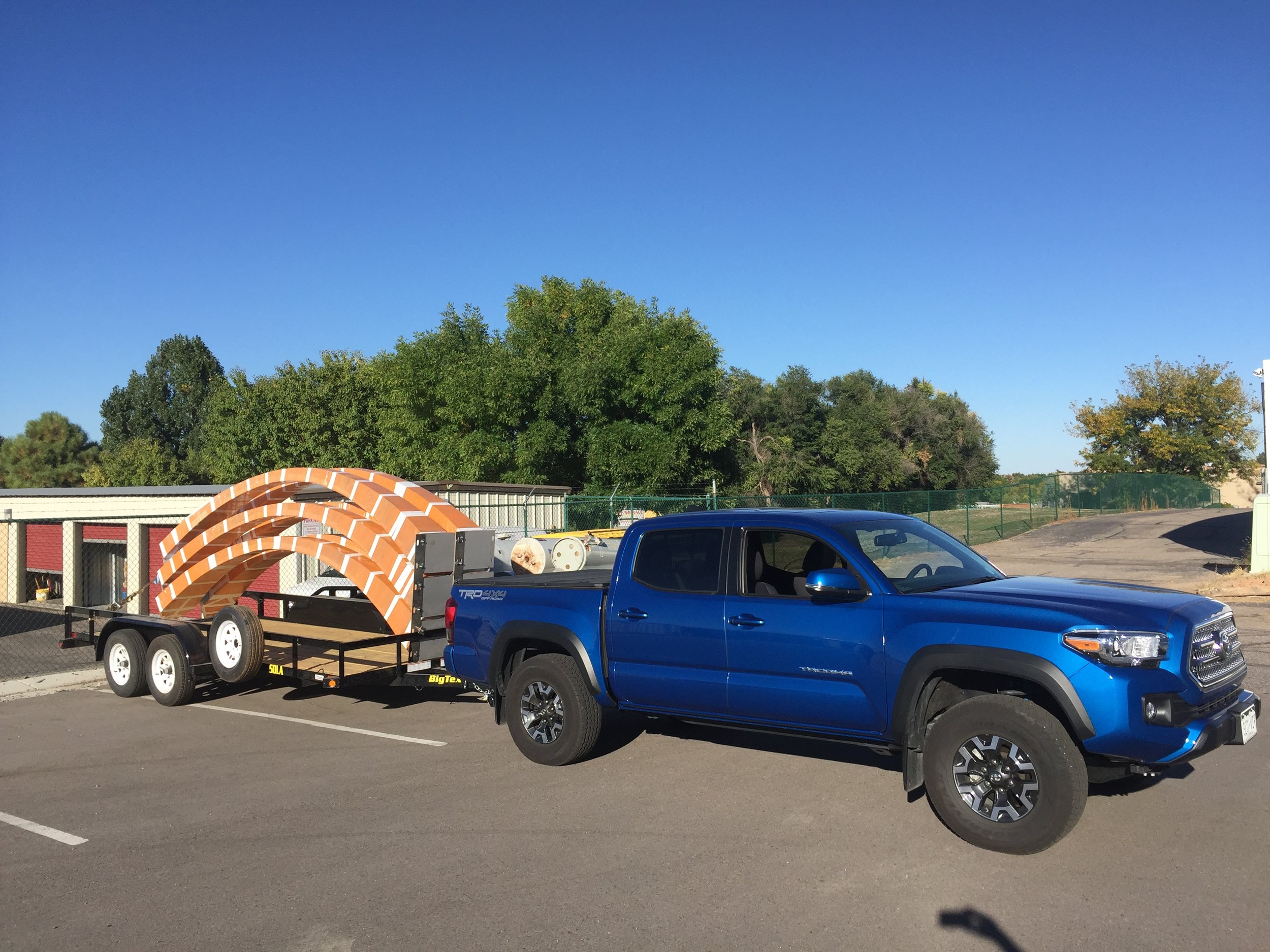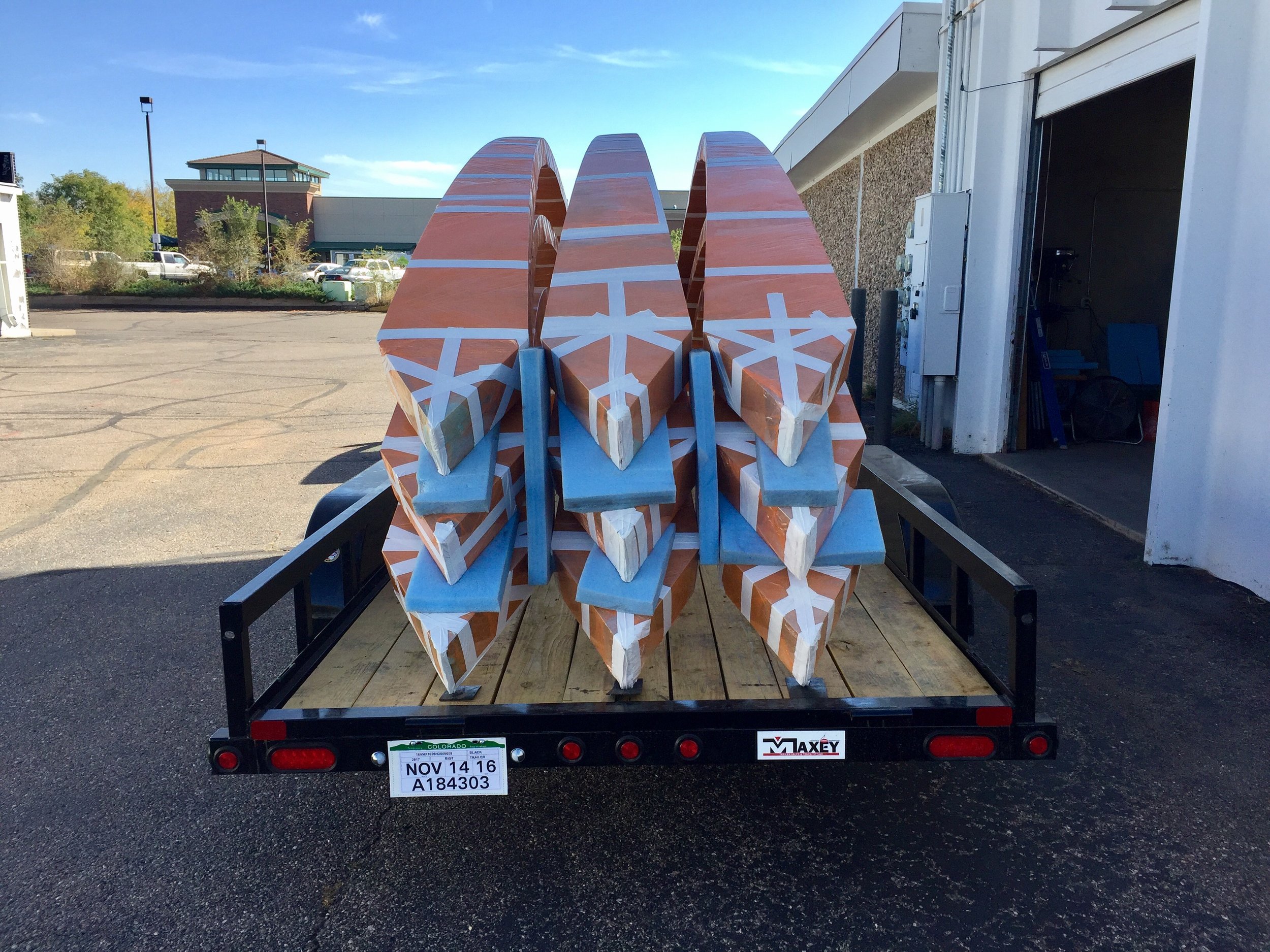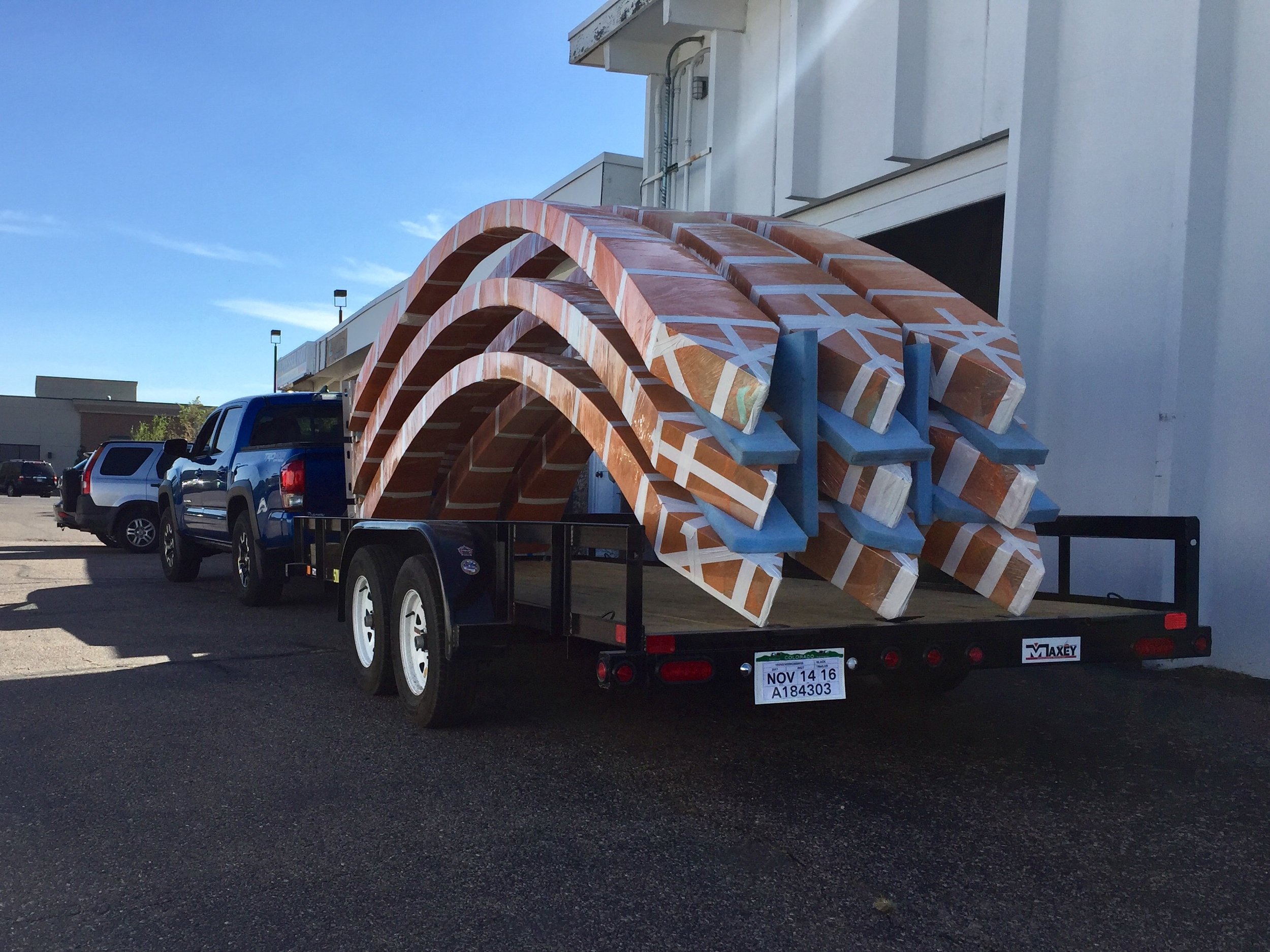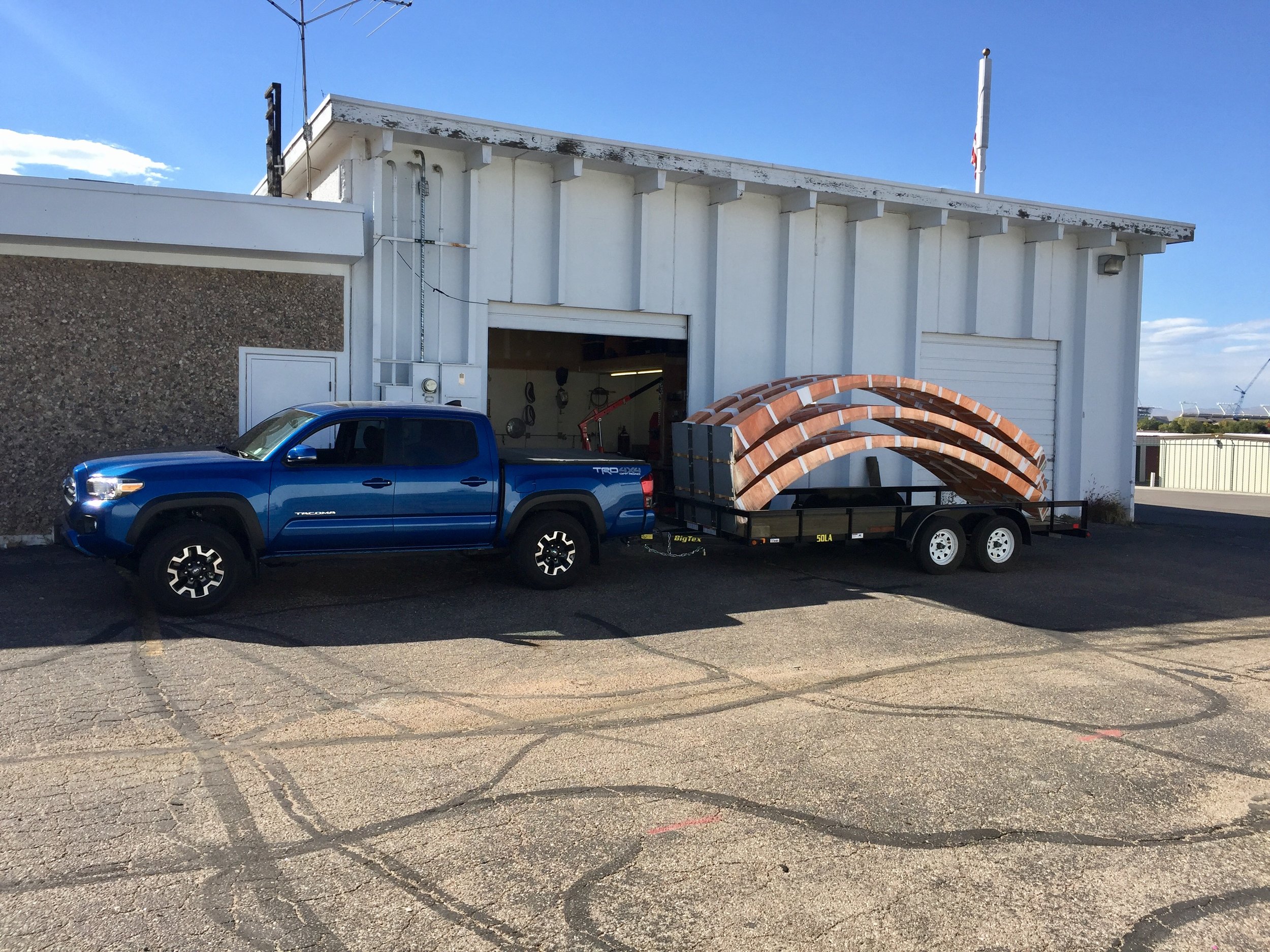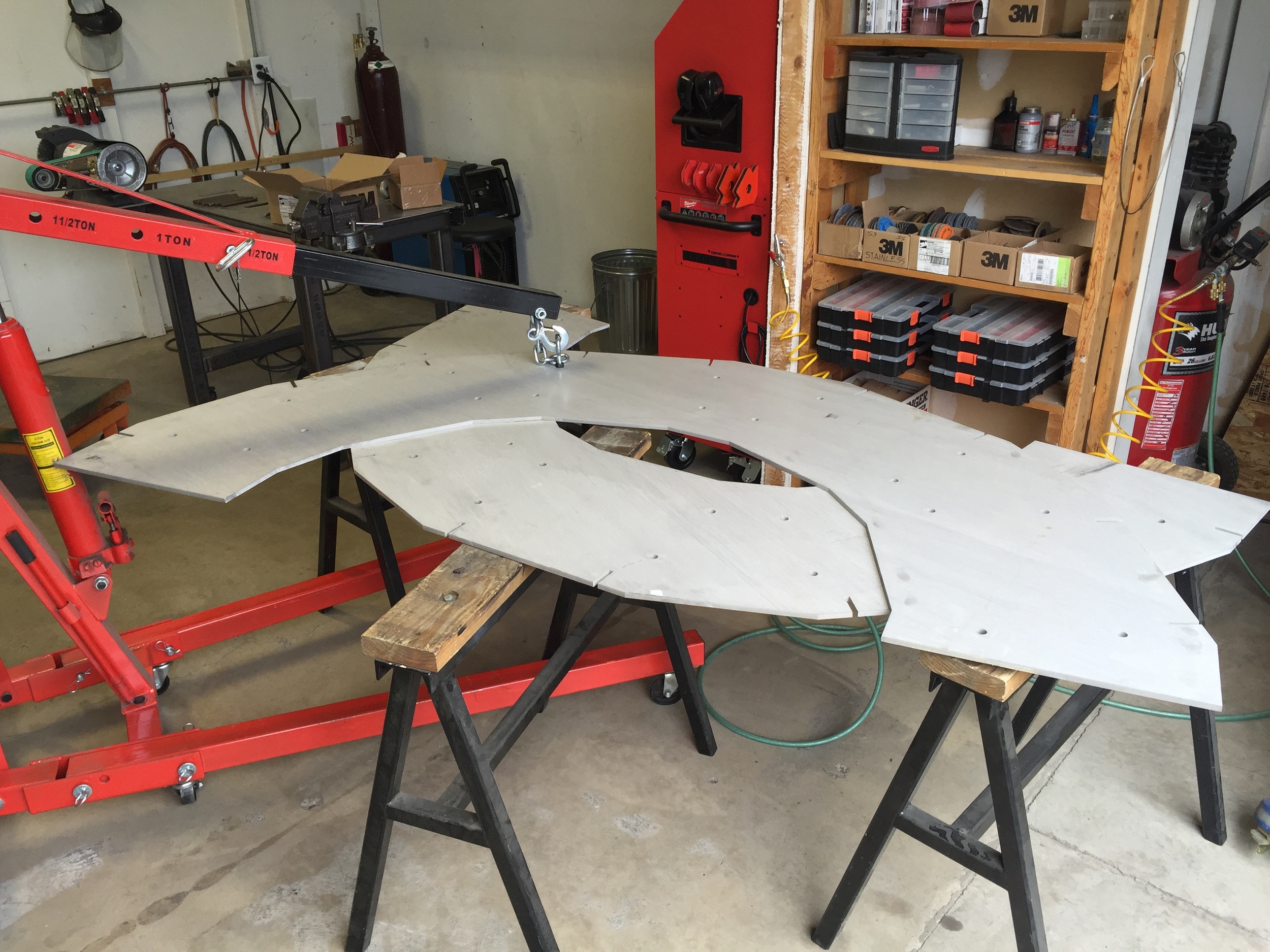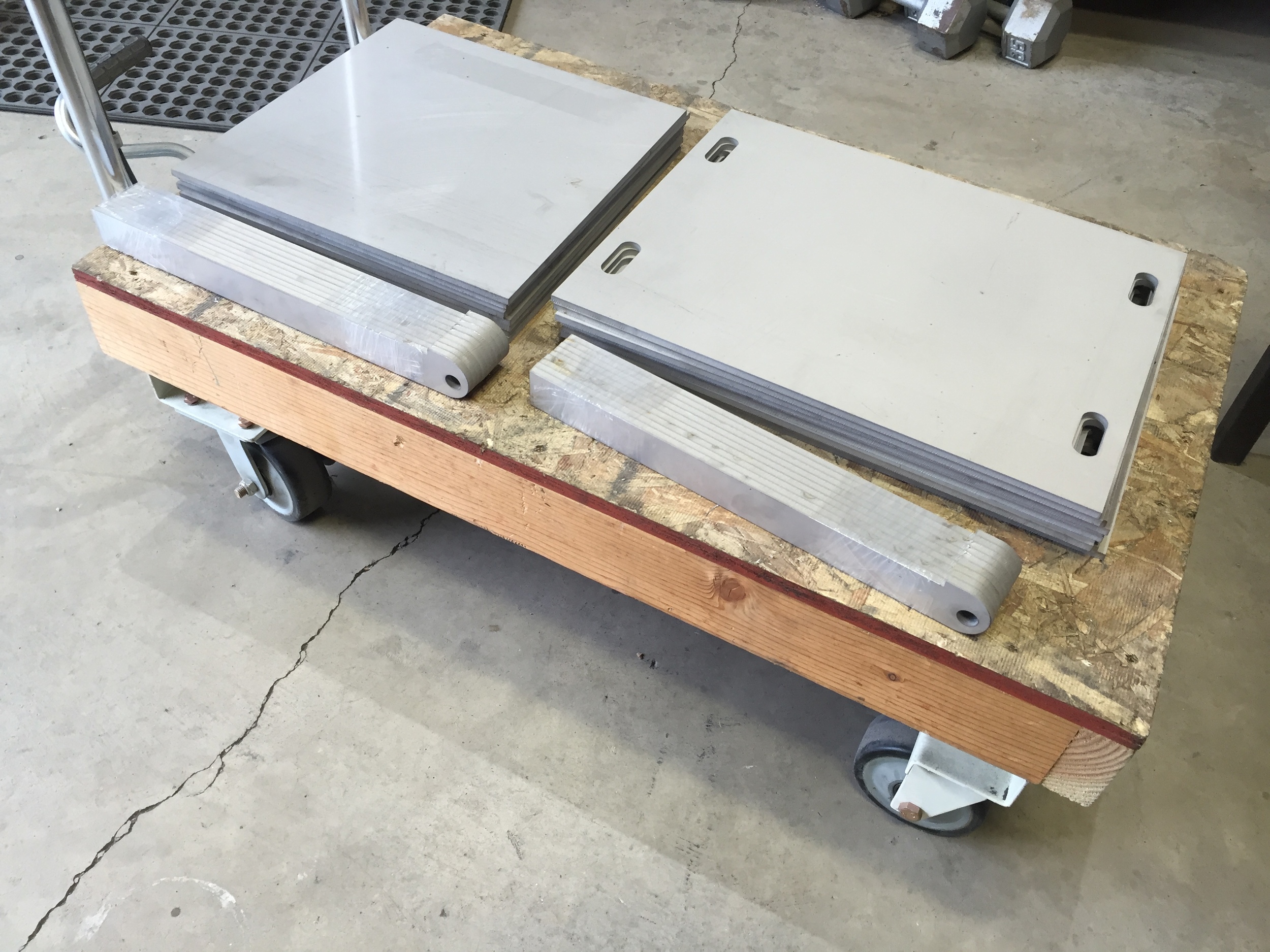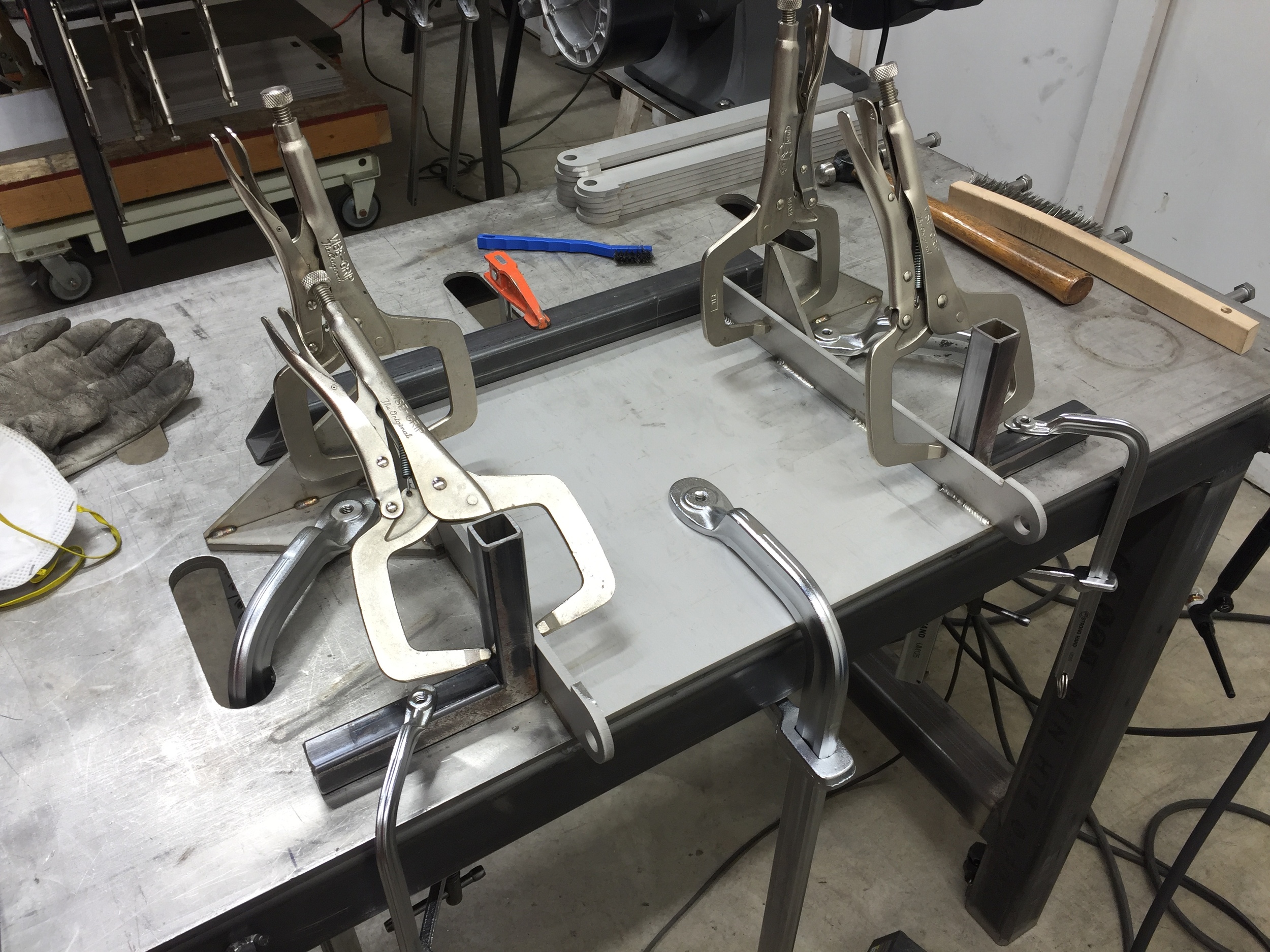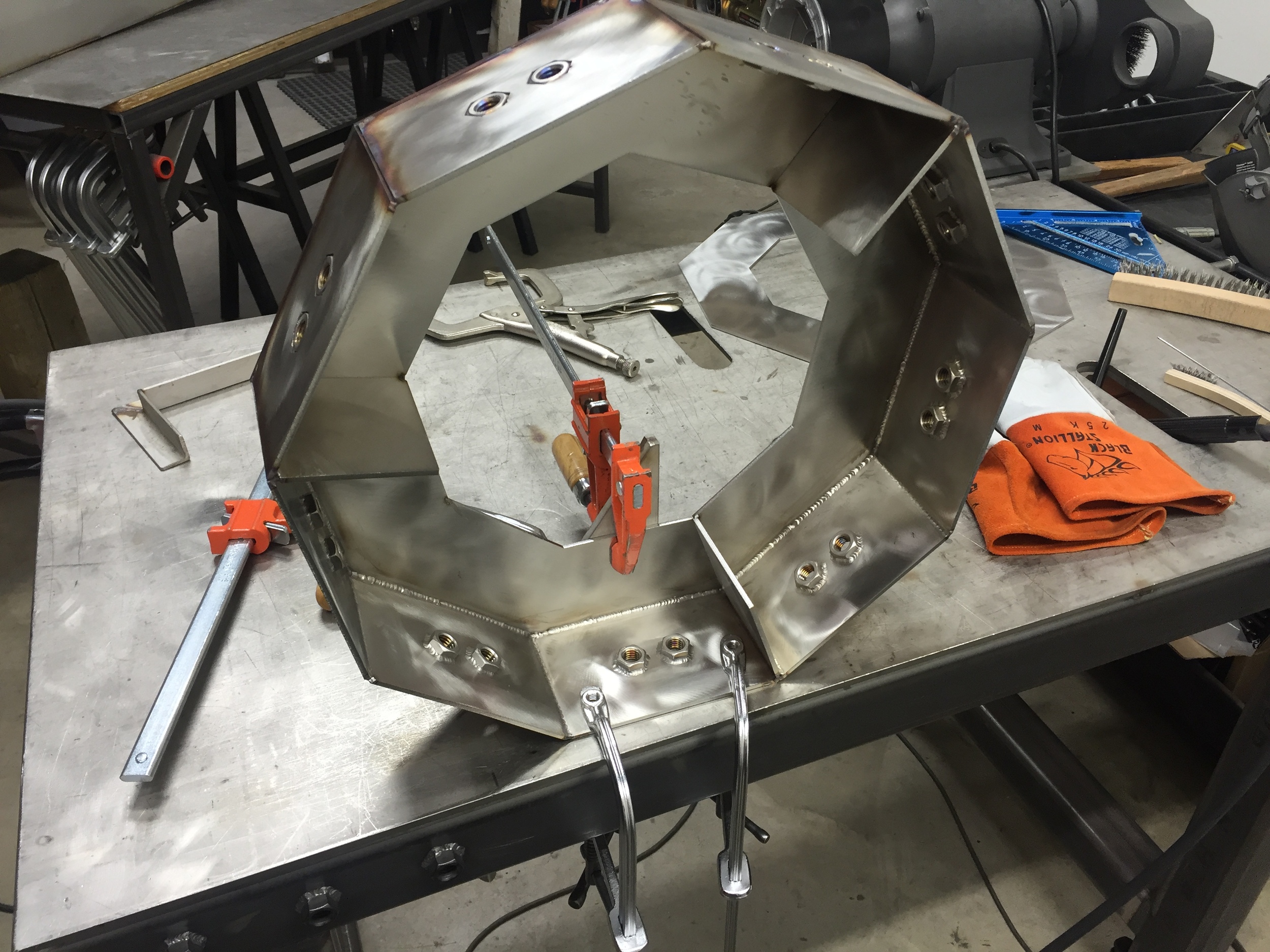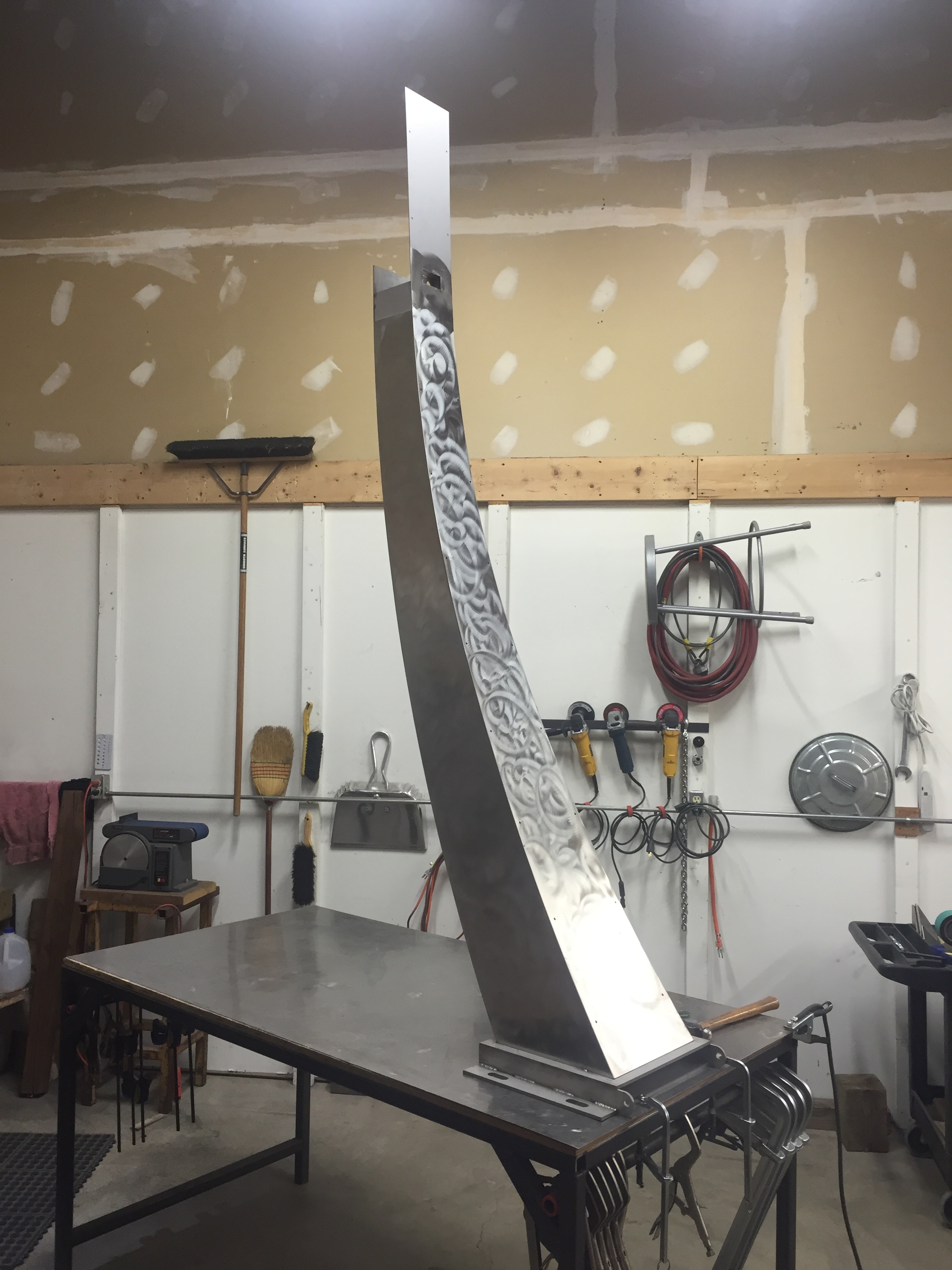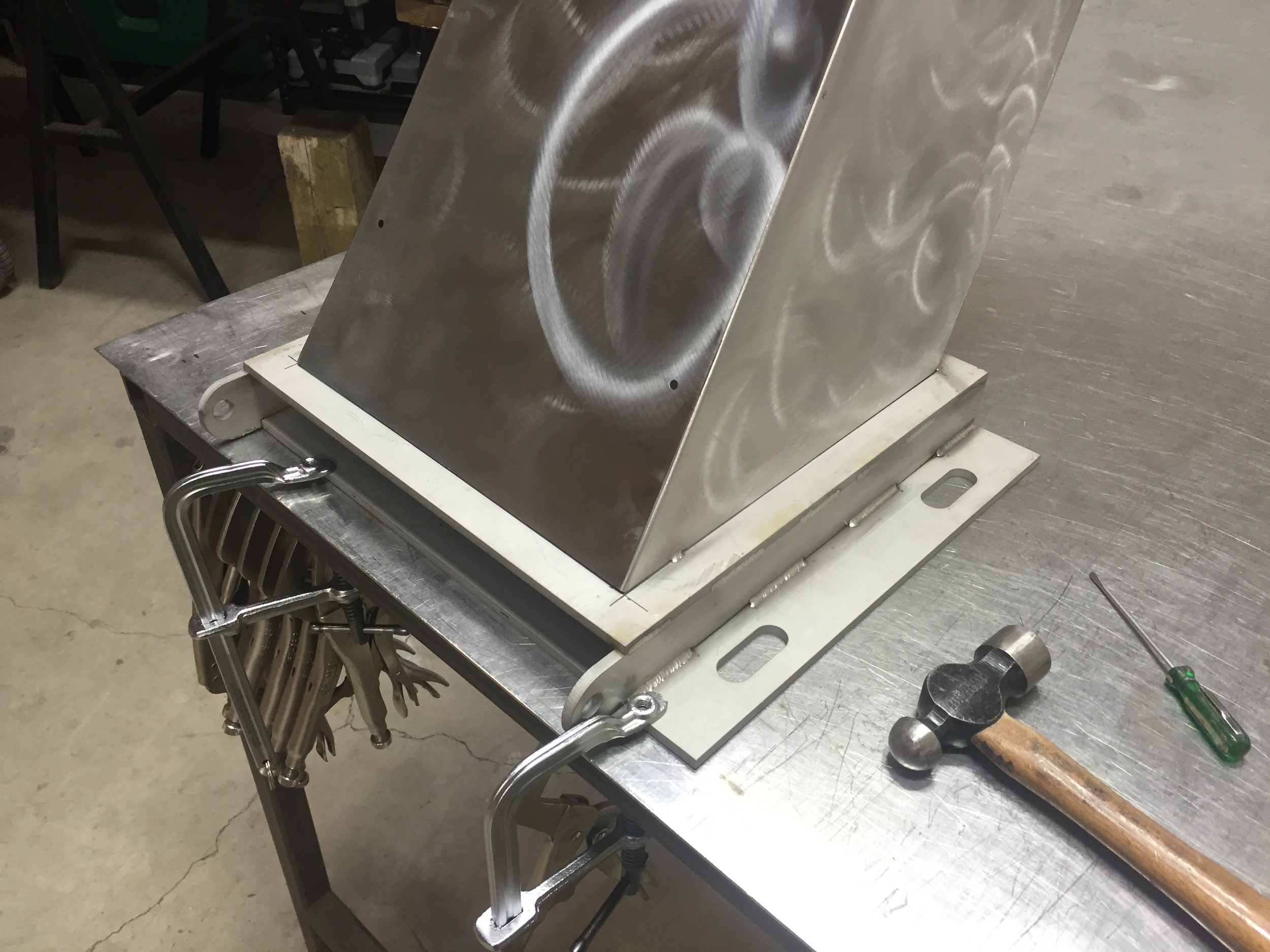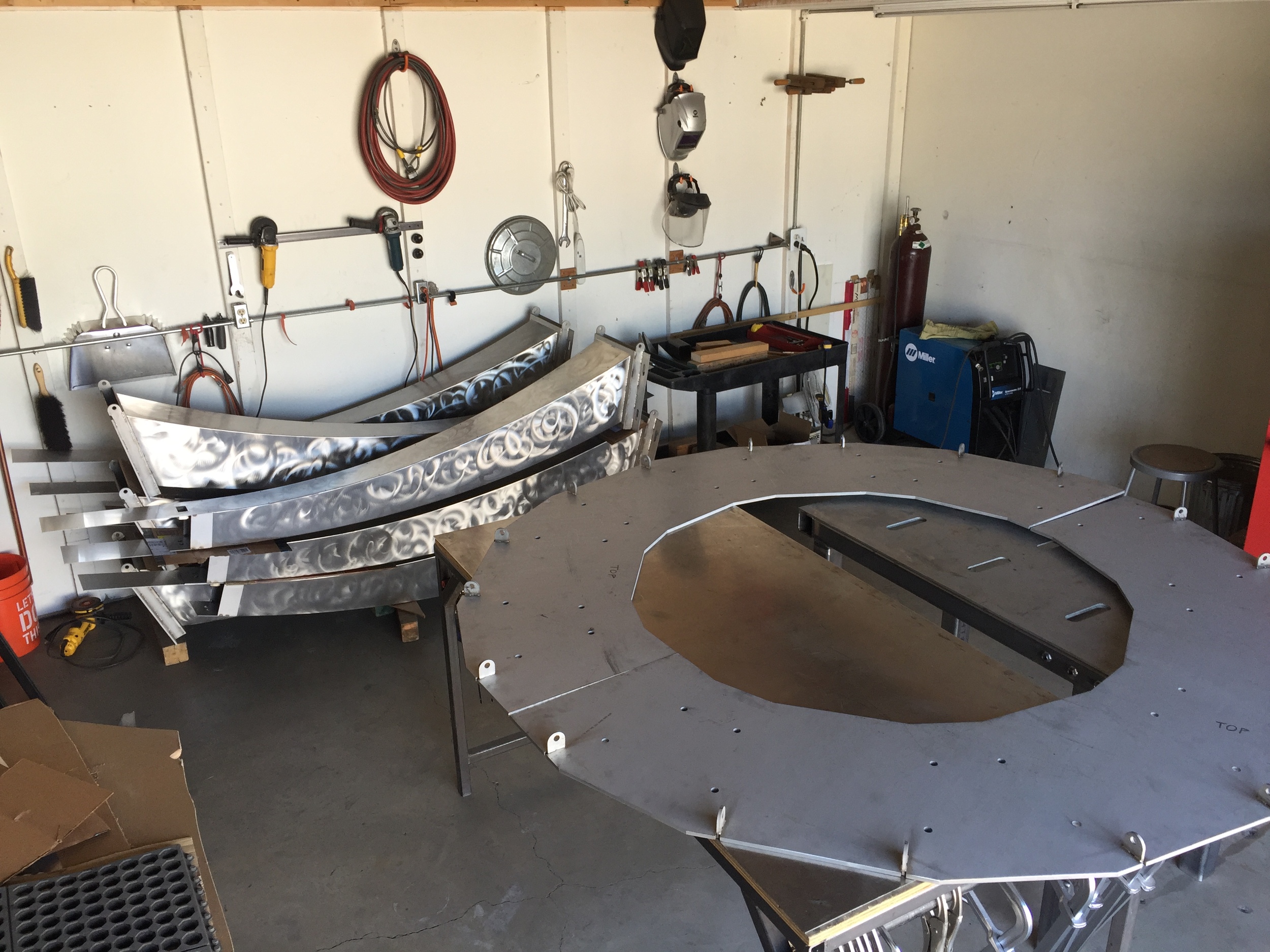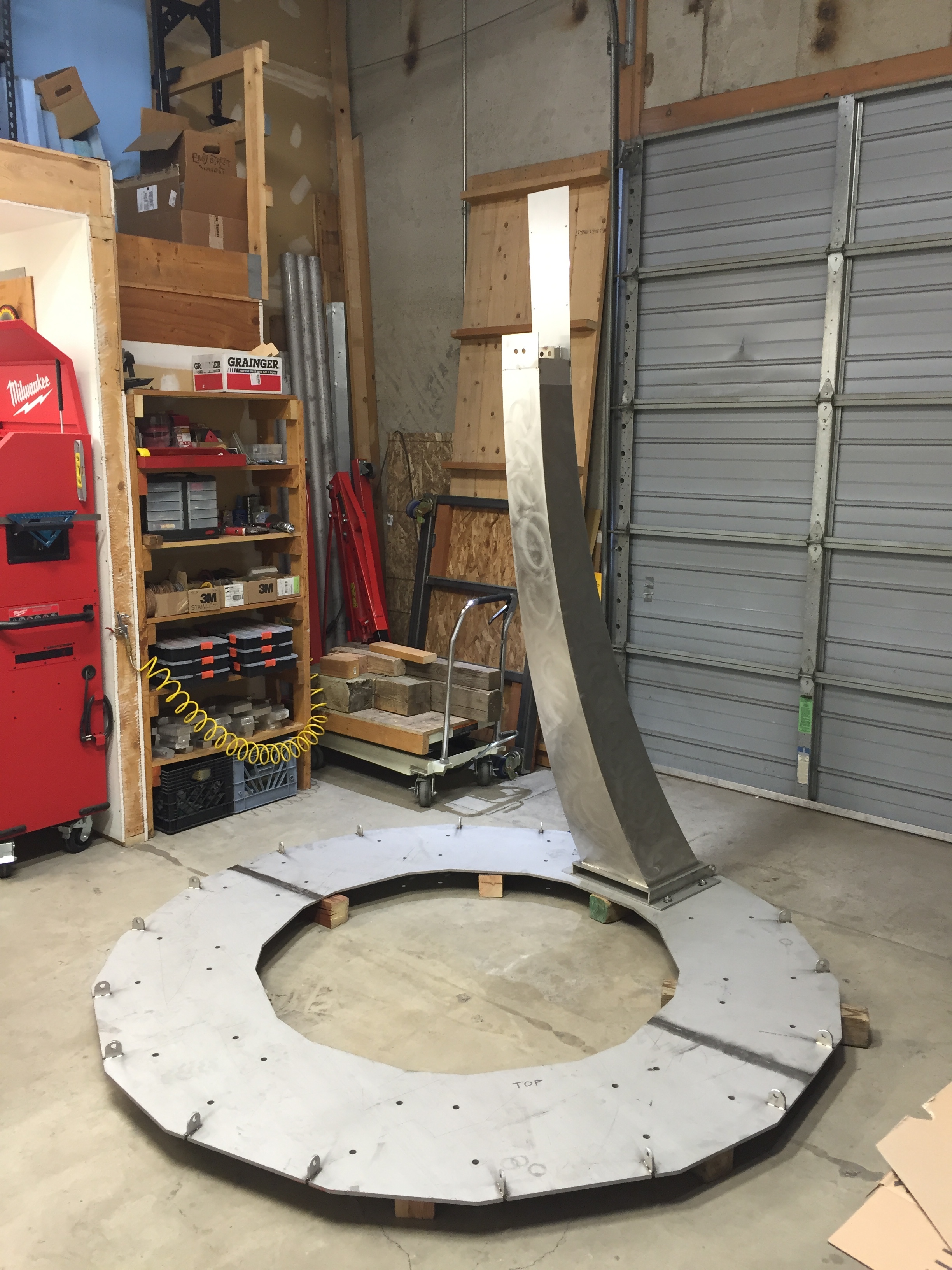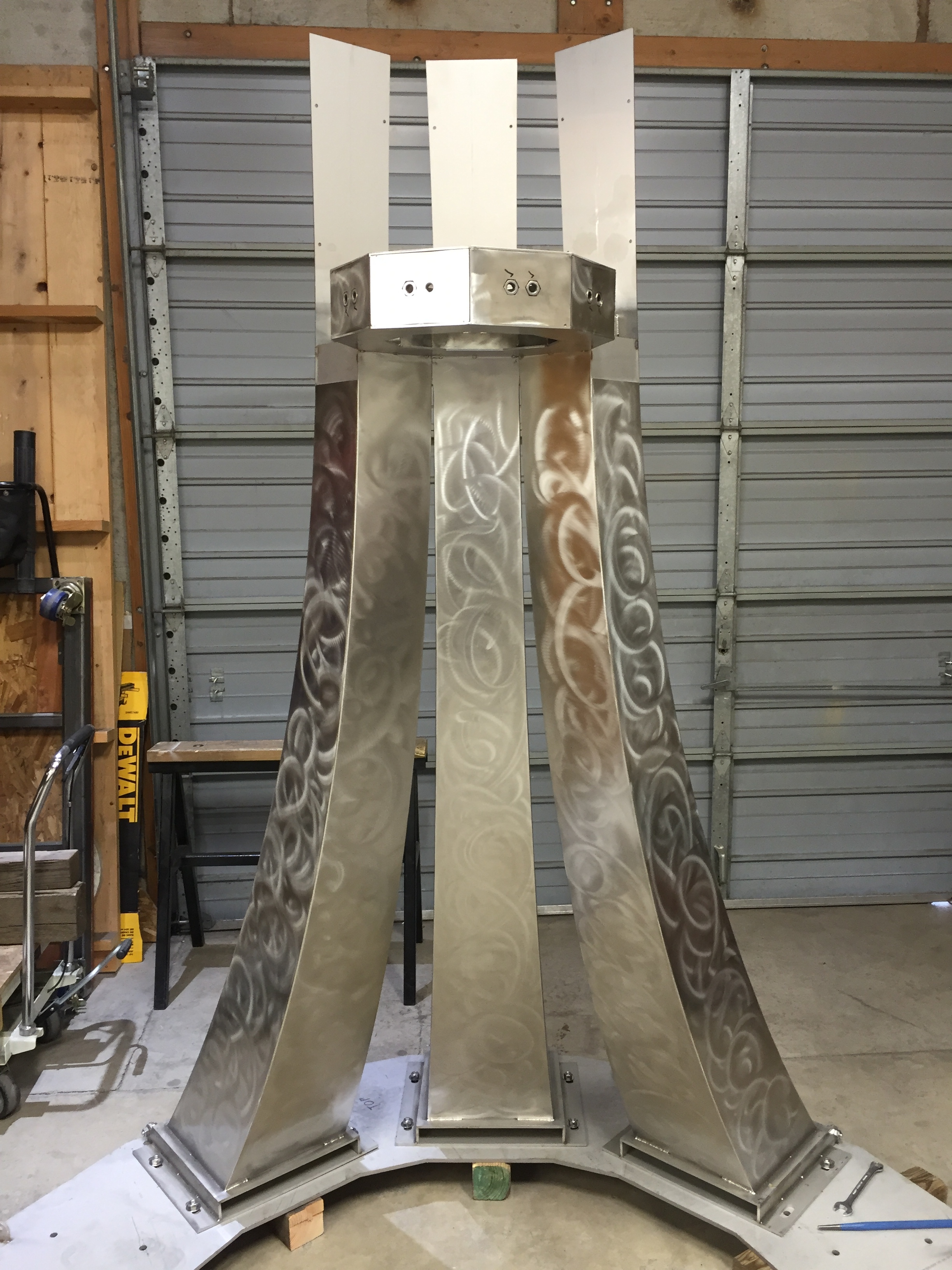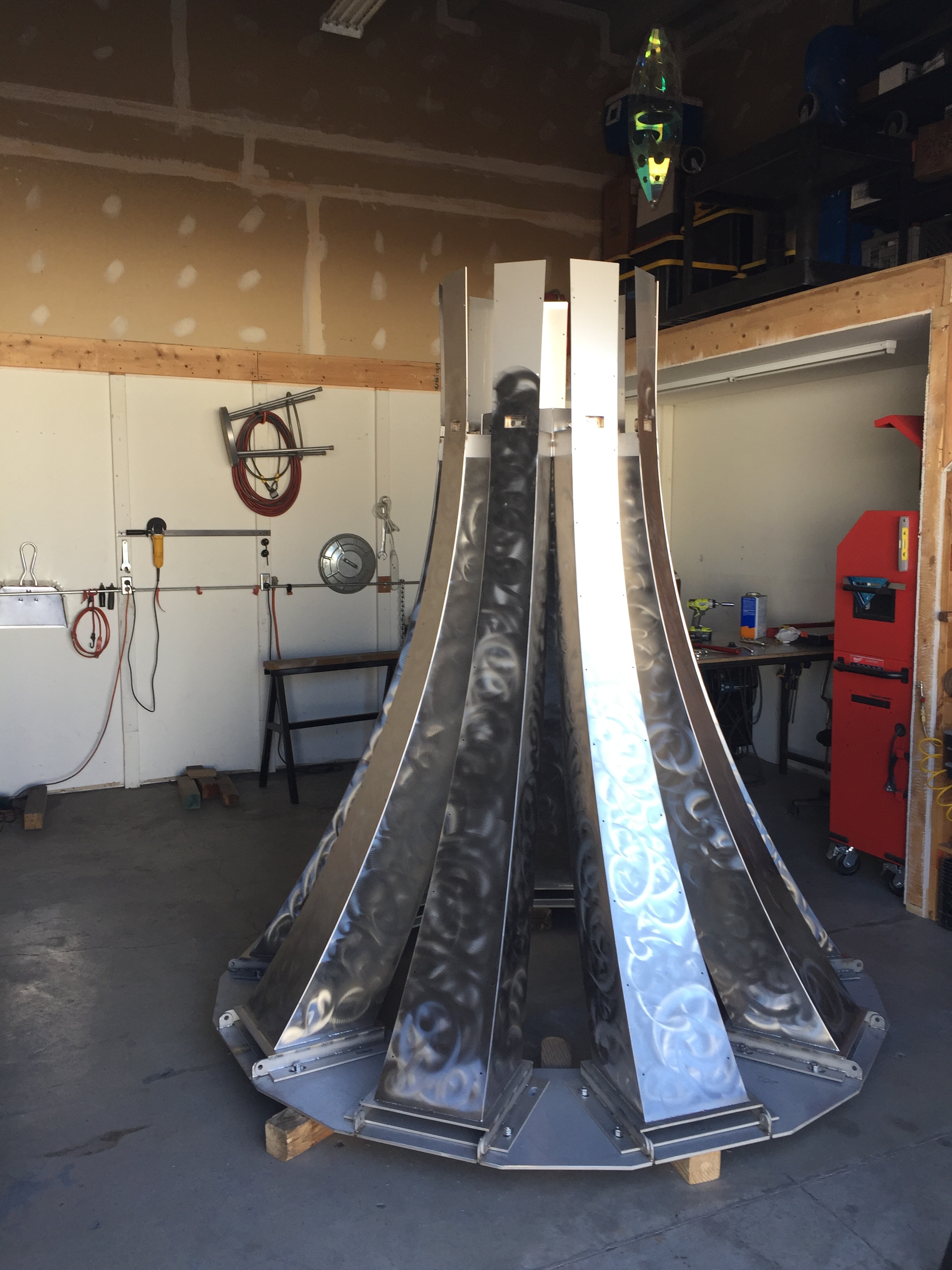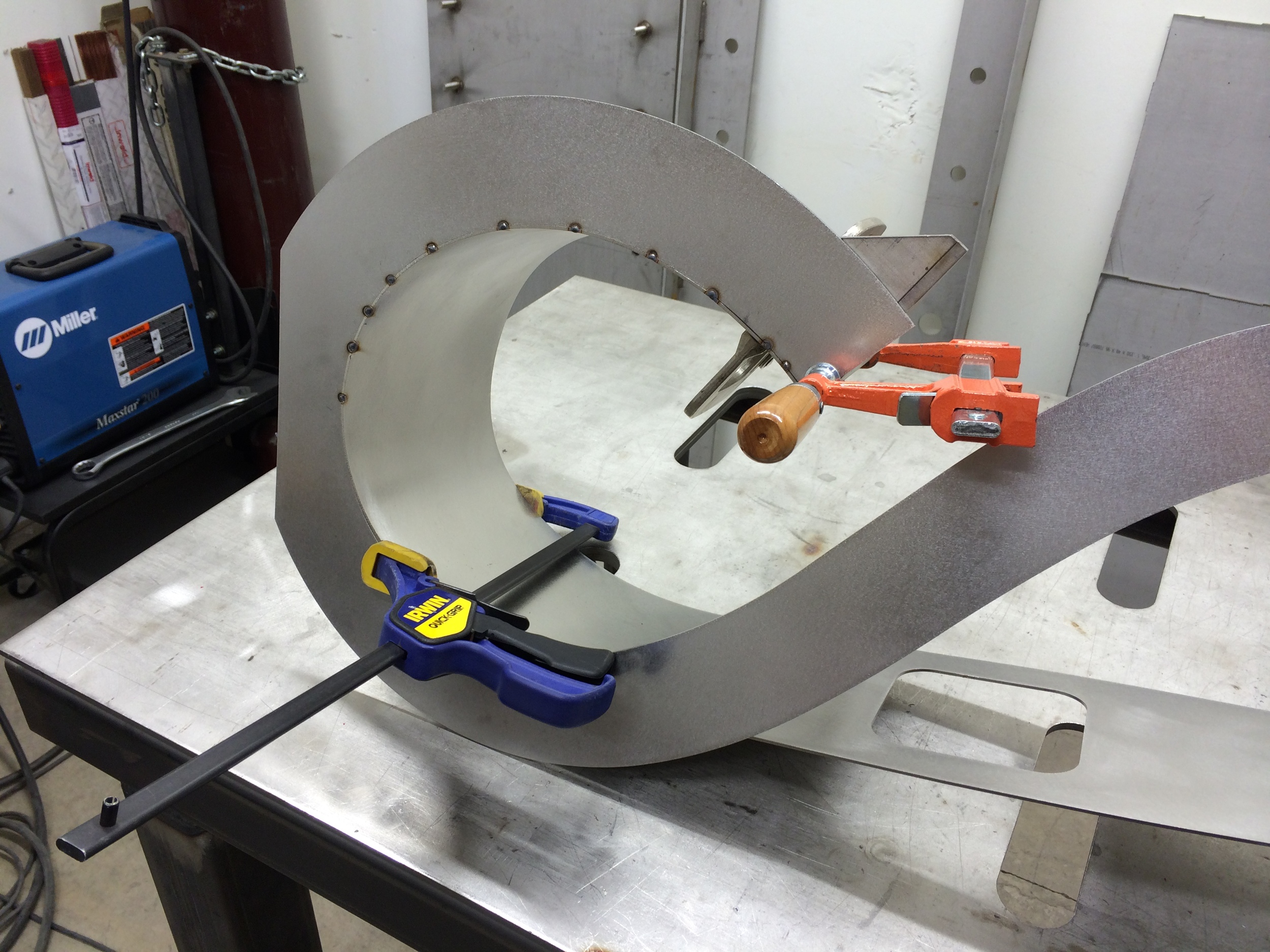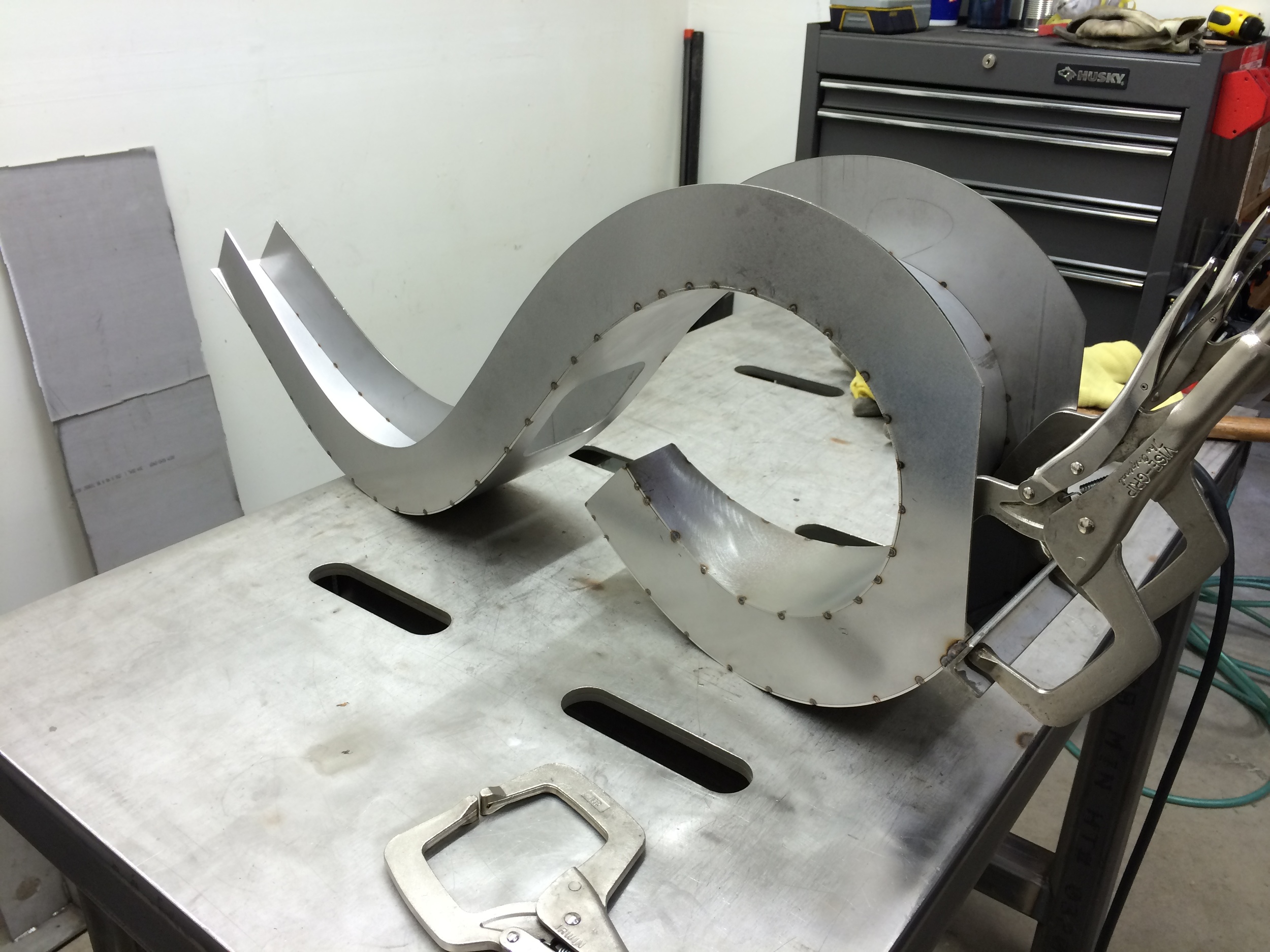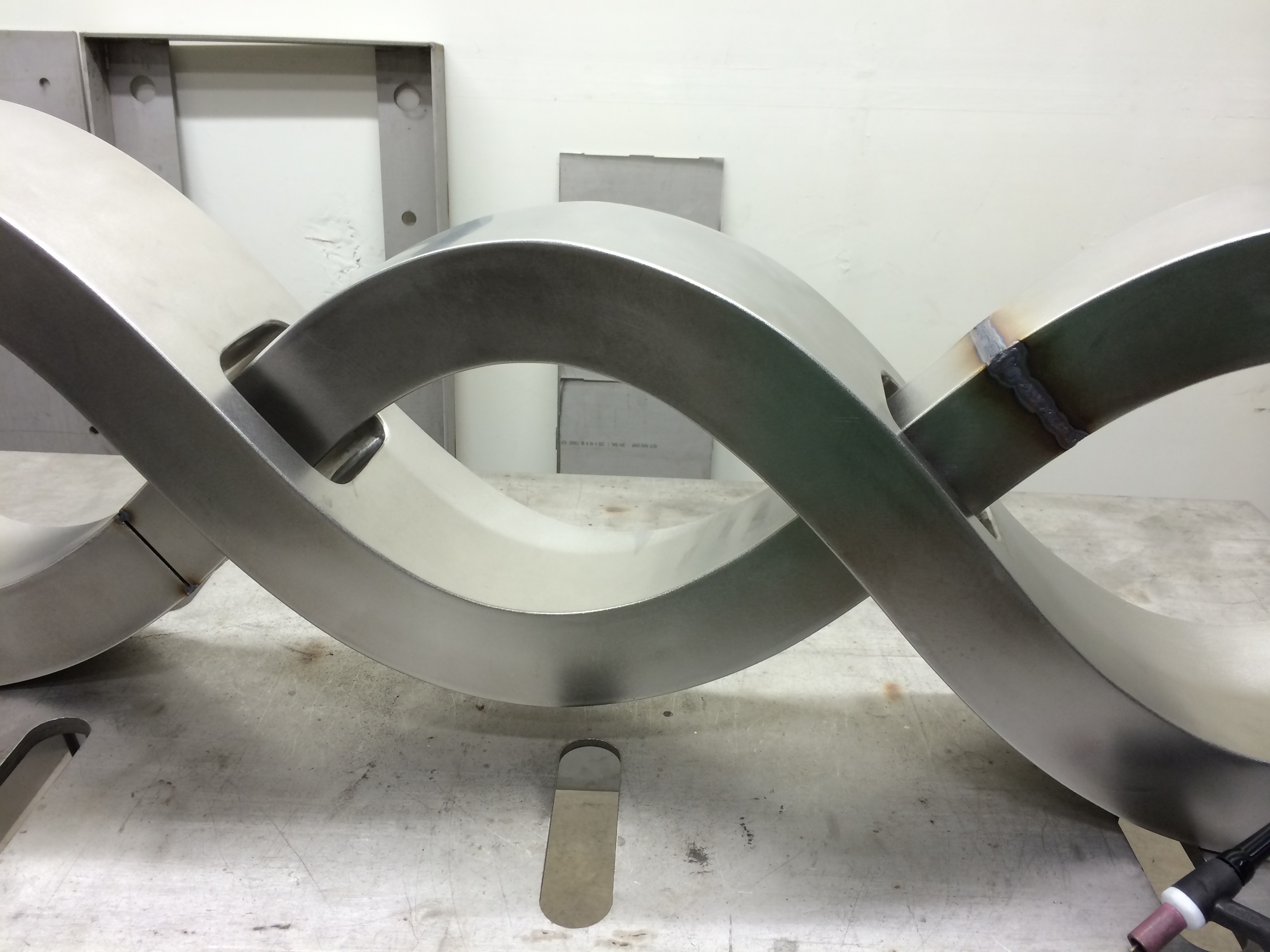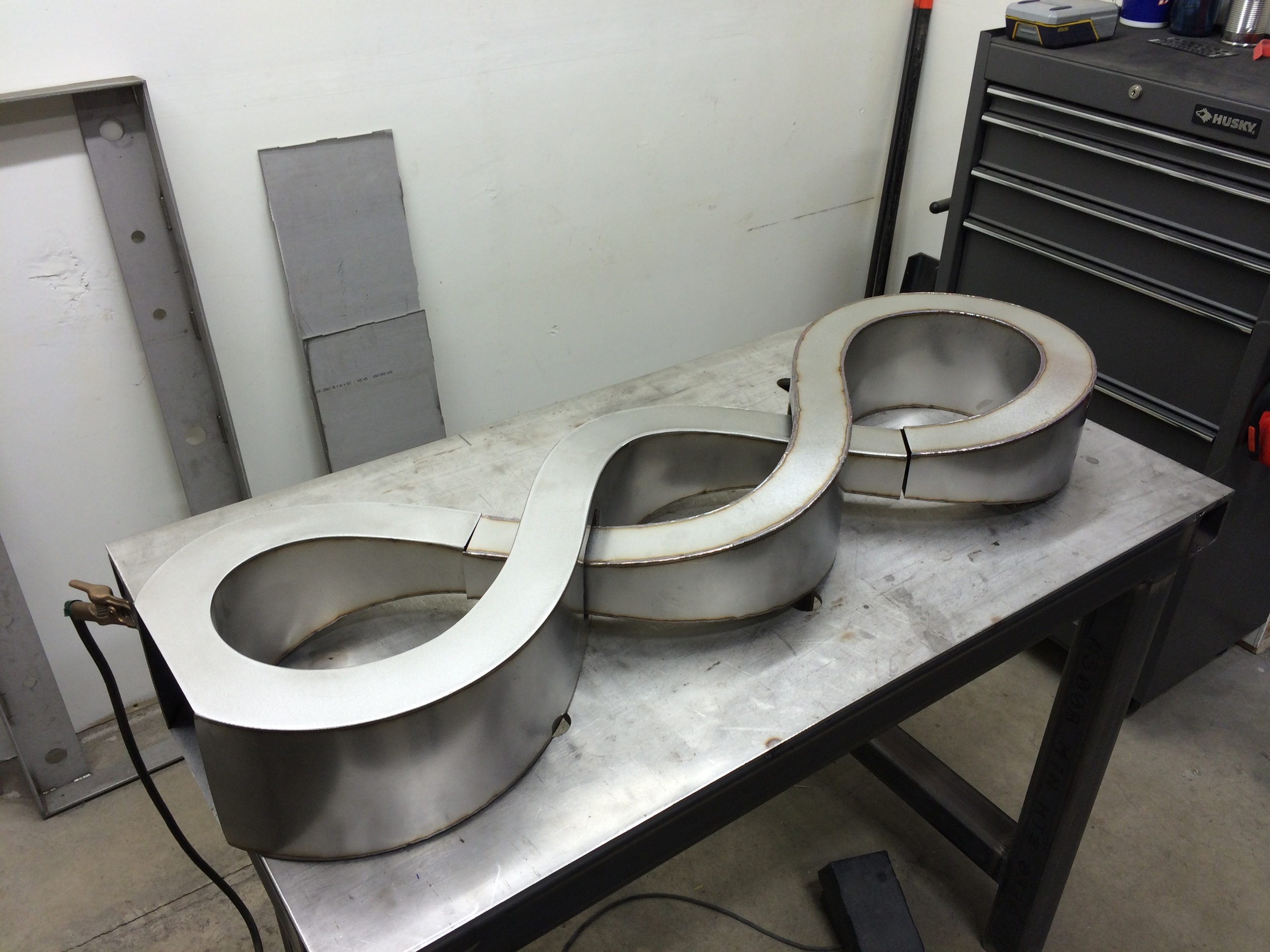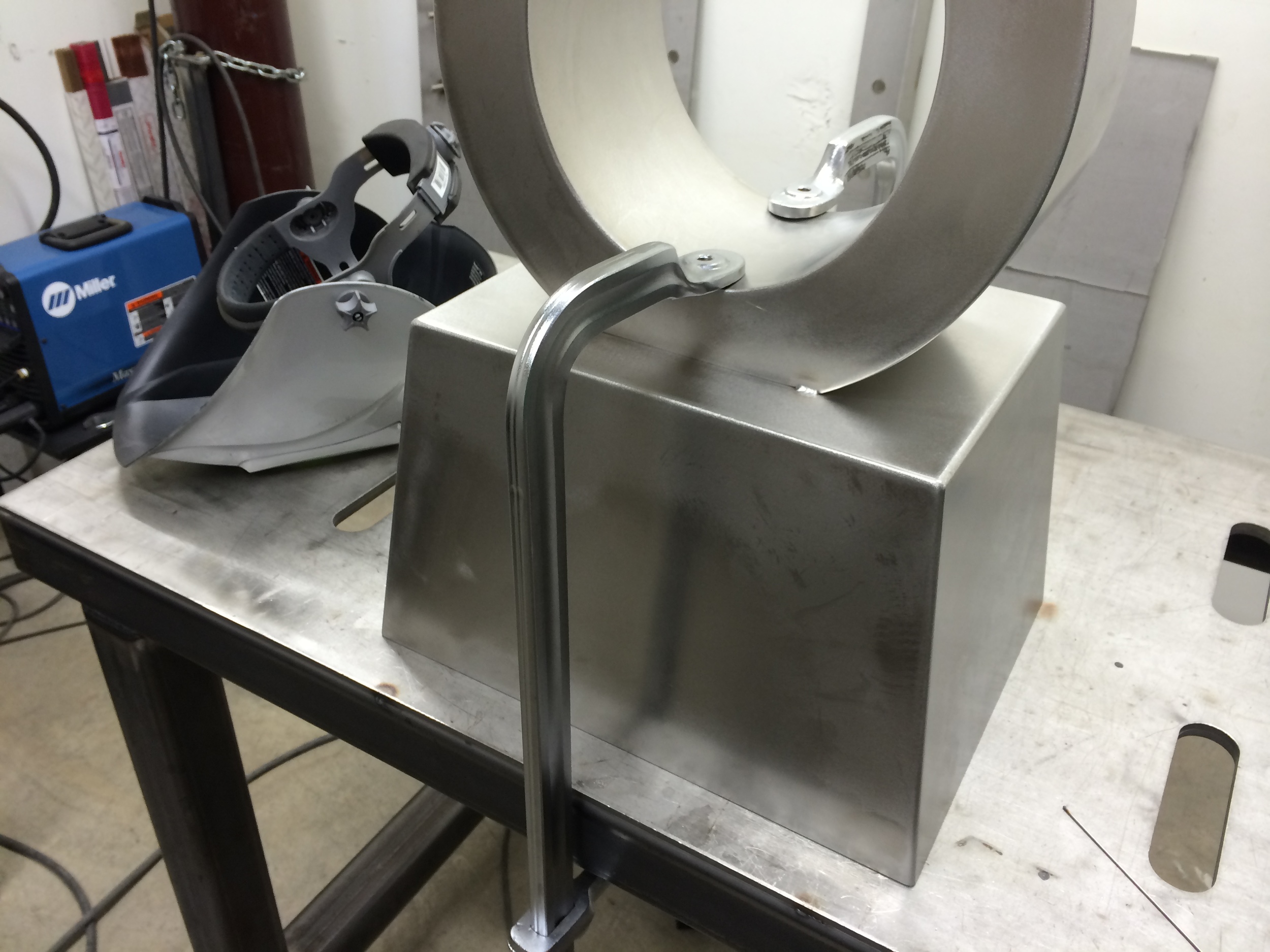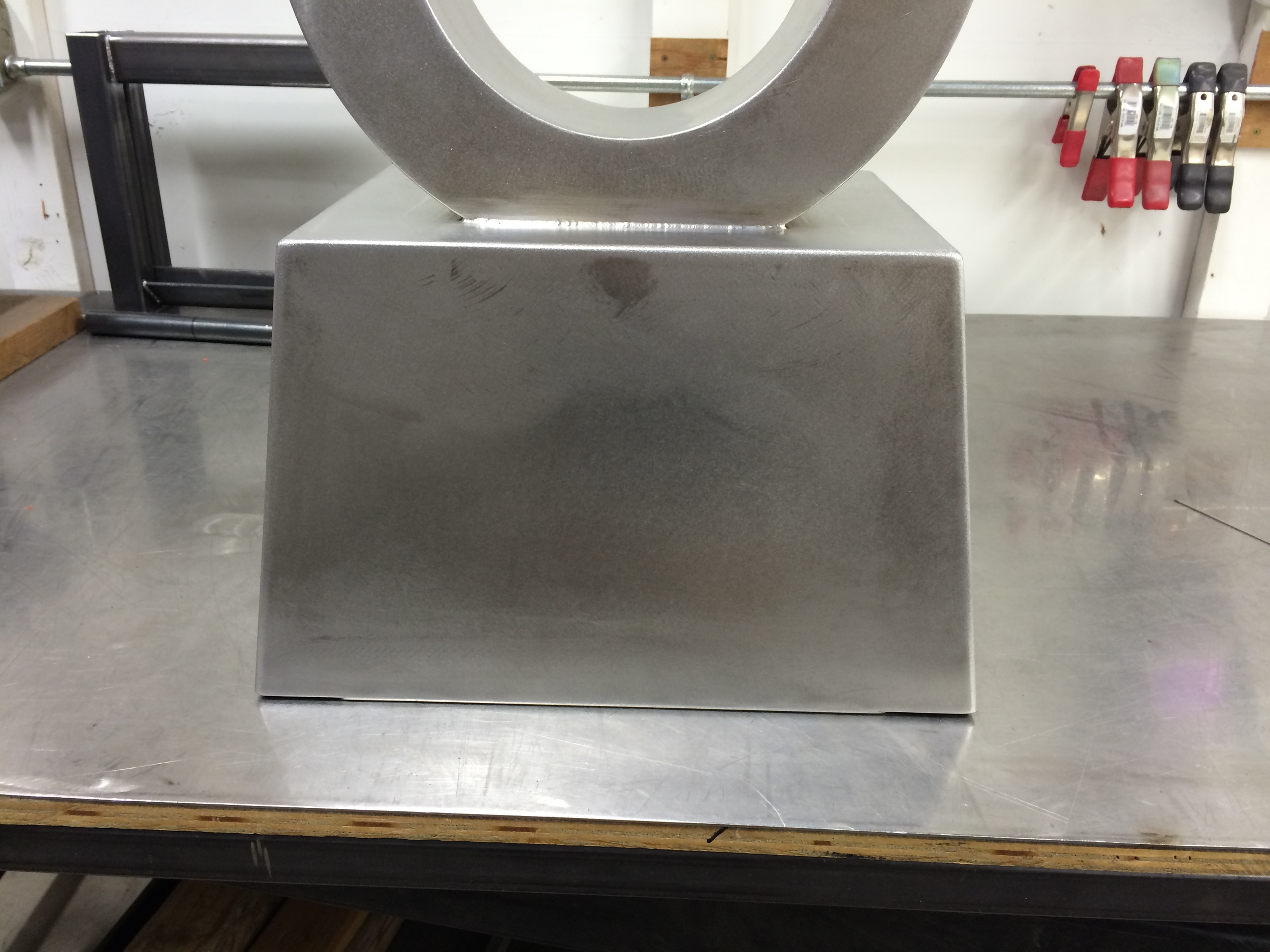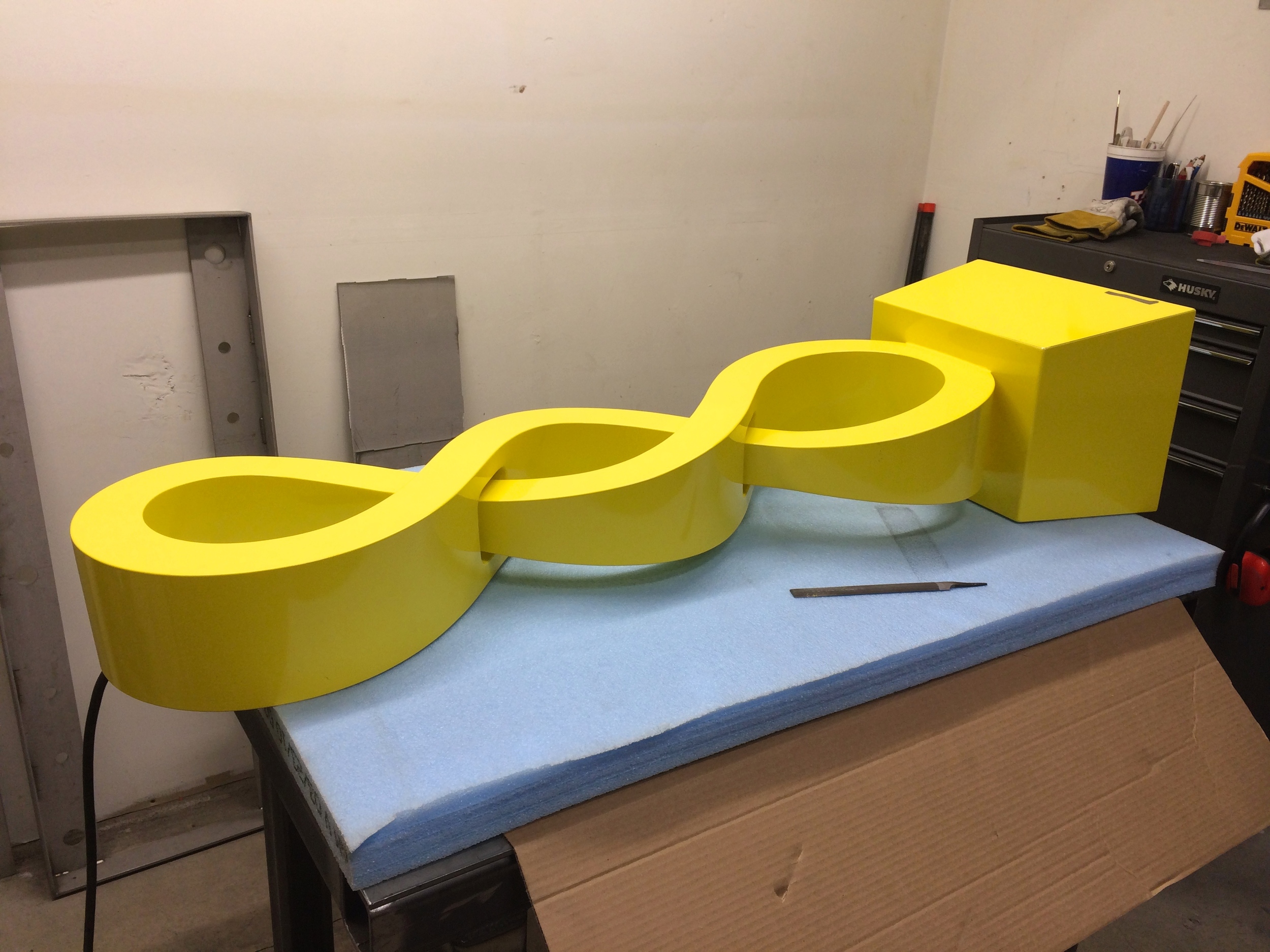What, two blog posts in a week? Am I feeling OK? Yep - just finally have some time to sit down and update things. Here's another piece I got done over the summer:

I batted around the idea of titling this one "Just After the Big Bang" or "Origin of the Universe" or some such - but I decided to simplify. Nonetheless, to me it represents what the Universe could have looked like just a few Planck Time units after the Big Bang, with a lot of artistic license thrown in for good measure. I started with a simple egg-shaped surface in Rhino, then used the built-in Paneling Tools to array the hexagonal base unit over said surface. LOTS of flailing around and reiterating until I finally got something that would work. One complication of this particular design that normally doesn't occur in my Rhino work is the thickness of the material - because it incorporates repeating components, the thickness of each one must be allowed for in order for the pieces to properly form the correct final shape. This is one area that Rhino struggles in, as it employs surfaces that are zero-thickness rather than solids with volume like real-world sheet metal. I imported the surfaces into Solidworks and added the appropiate thickness, but then had to pull them back into Rhino to produce the correct patterns for the laser cutter - Solidworks is just too rigid to allow my crazy shapes to be modeled with its sheet metal tools. Go figure. Anyway, this is what I ended up with, pared down to a quarter of the whole form:

As you can see, each strip (color coded for clarity) is just slightly different from its neighbor, necessitating careful labeling in order to keep it all straight. It also takes someone who can handle simple arithmetic, like how many quarters it takes to make a whole - which I goofed on and had to order the other half after the fact. Oops. 2 X .25 is NOT 1. Below is the unrolled strips - half of them, anyway.

Evident on these strips are the bend lines, with mountain and valley folds color coded cyan and magenta. Keeping that sorted in my head was a source of continual stress. I ended up modifying a drill press vice to simplify bending the strips. The basic procedure can be seen below:

Once I had all the strips bent into these goofy accordian-like shapes, I was able to clamp them together and get a pretty decent tack with the TiG welder to glom them together. This was by far the most labor-intensive sculpture I've made so far.


As the strips went on, they gradually forced themselves into the desired egg-shape. I did have to tweak and clamp and swear and complain to compensate for small erors that grew larger over time, but it actually formed up pretty well.

This one was a real learning experience, forcing me to come up with all kinds of new techniques and procedures to get the job done. In other words, I loved it.
The frame you see in the top picture above is just for displaying "Beginning"; I envision this as a hanging piece in an atrium, stairwell, or foyer. The same techniques I empoyed here could be used on a much larger scale. I'd love to give it a whirl.



































